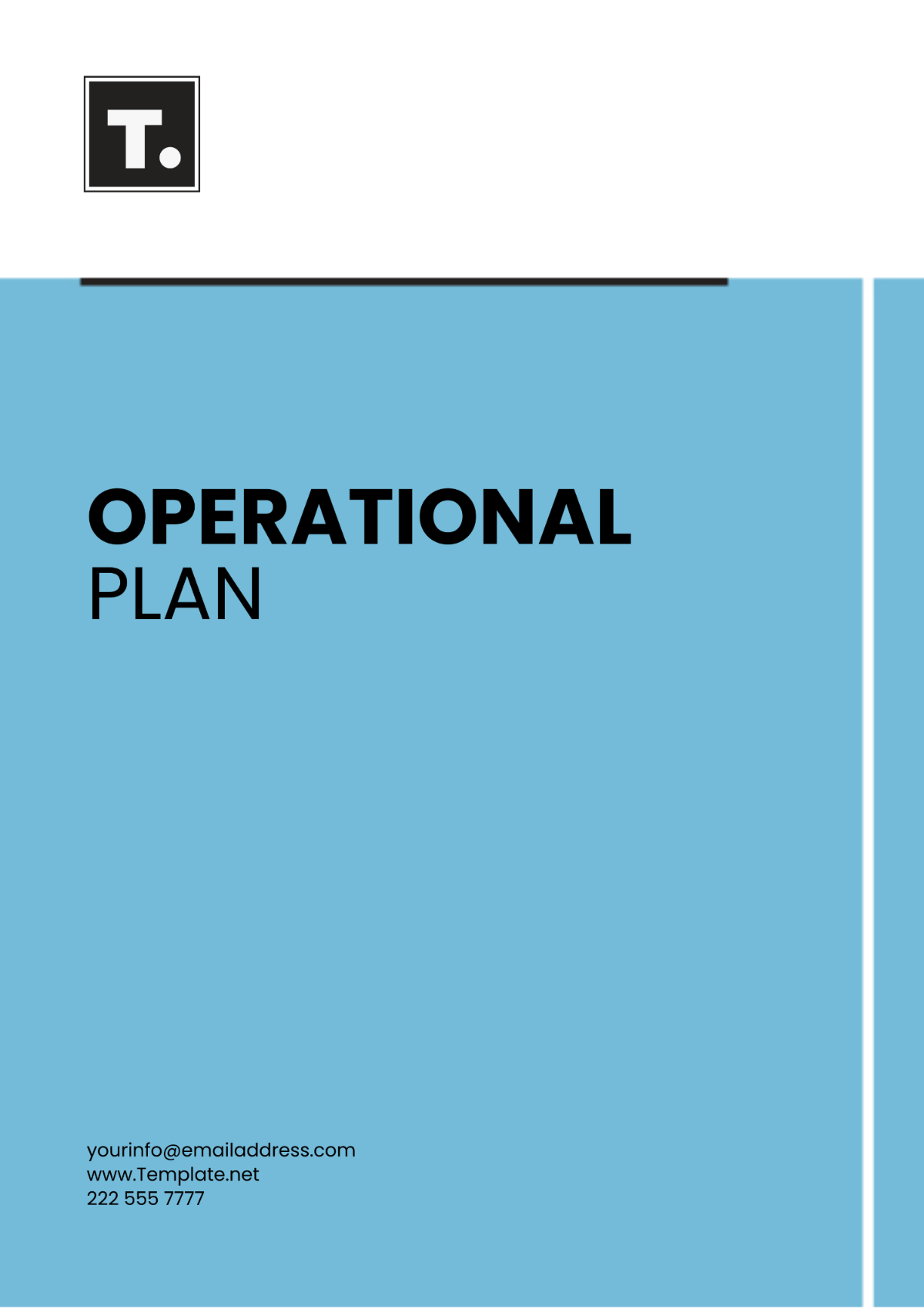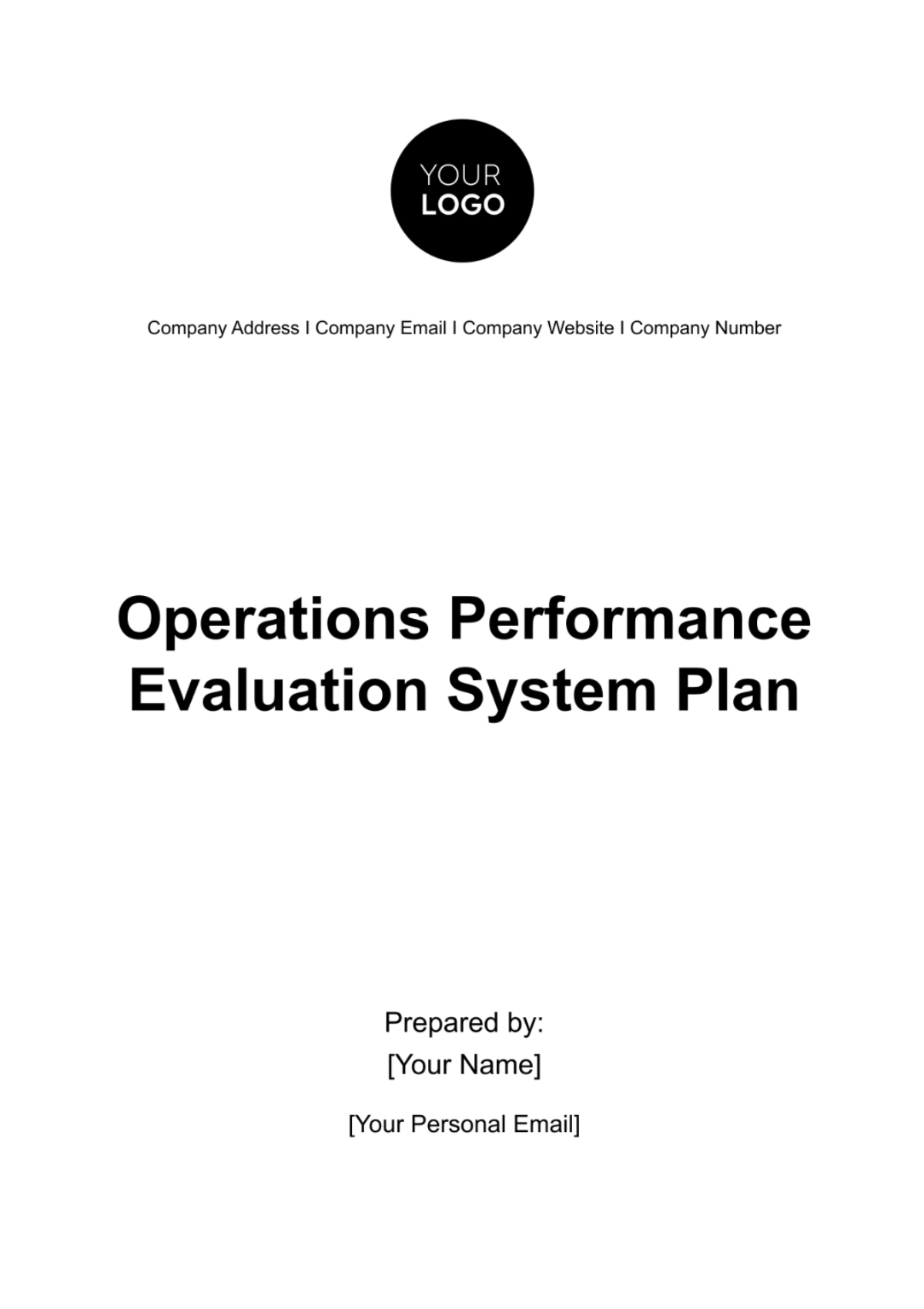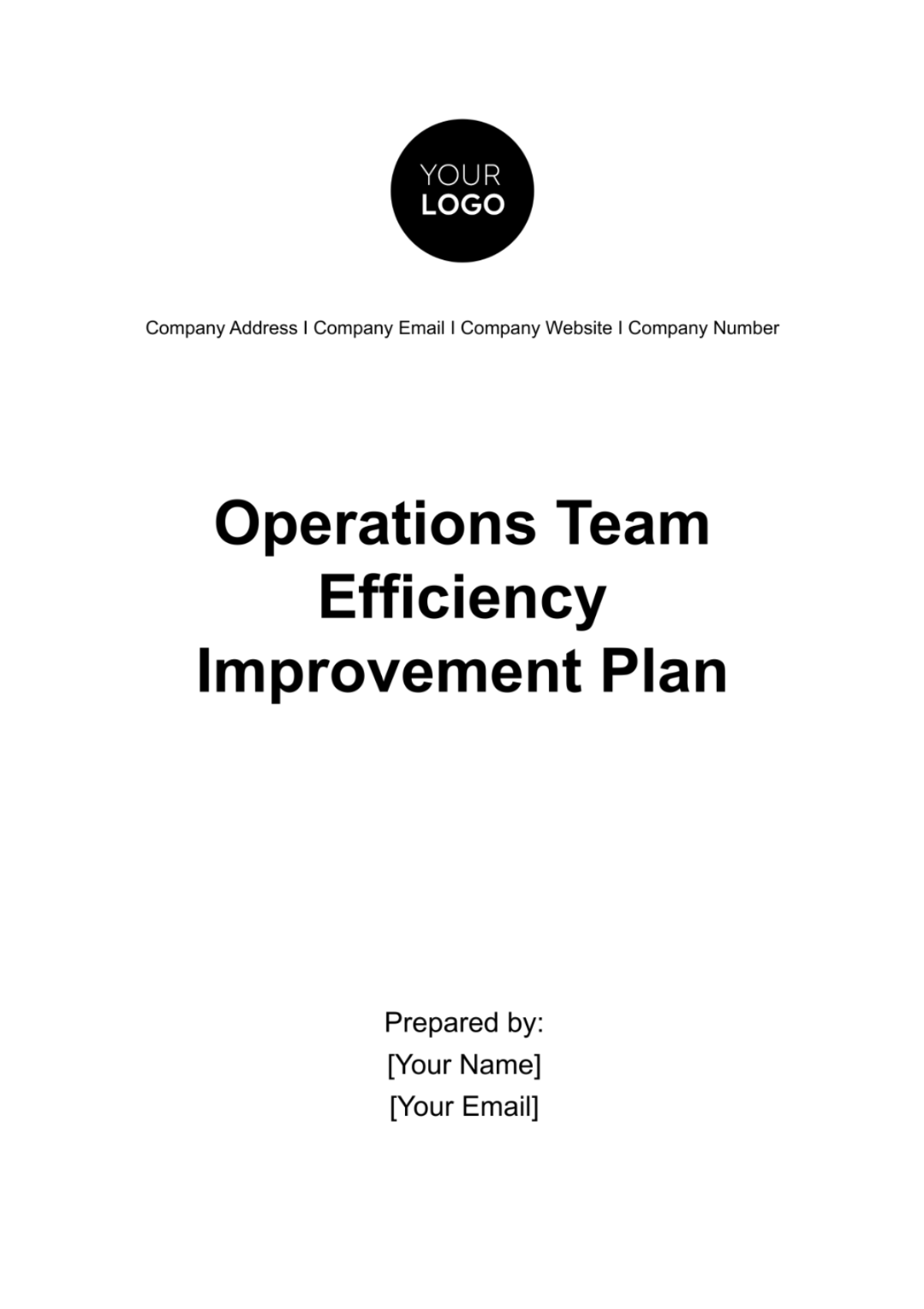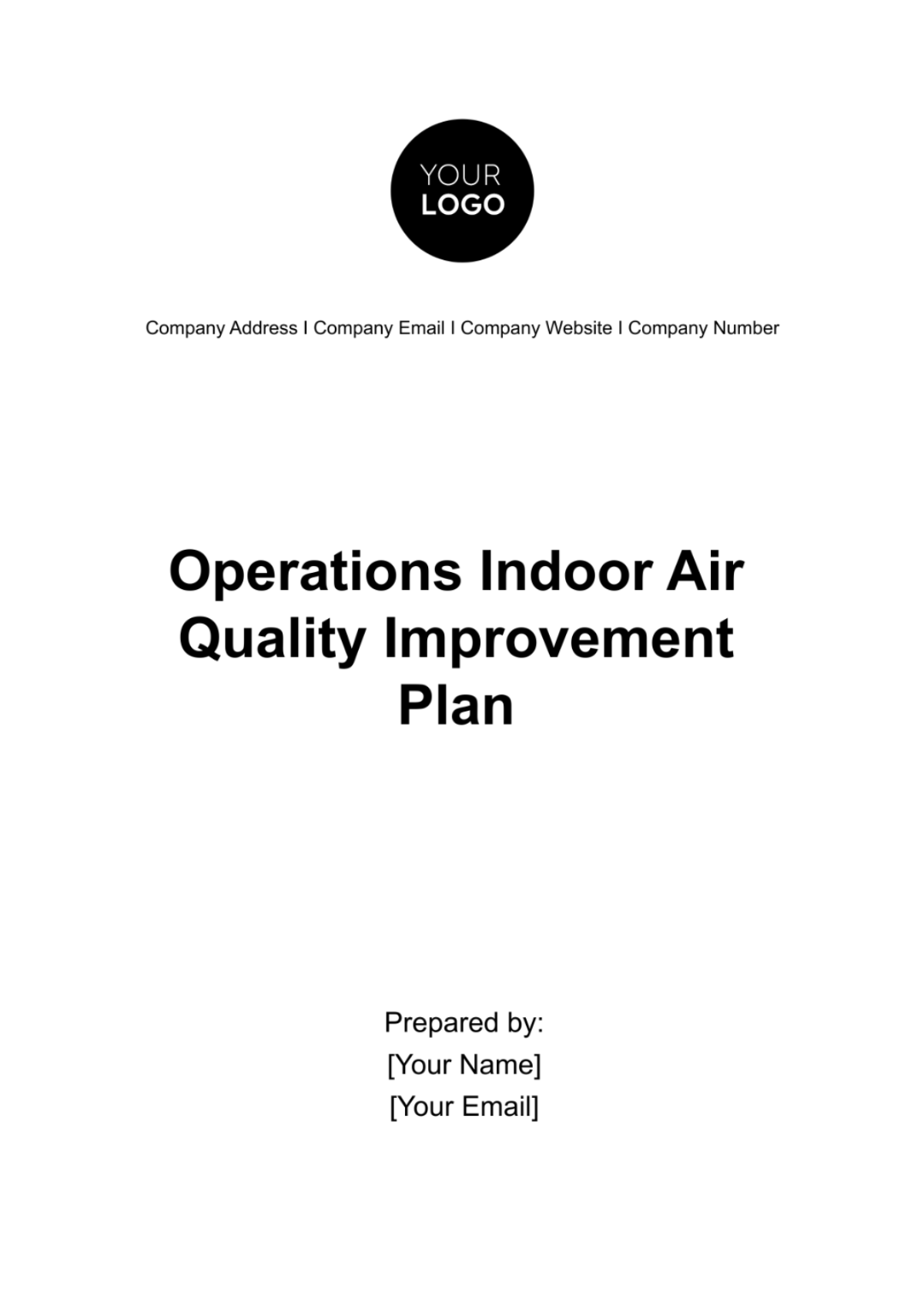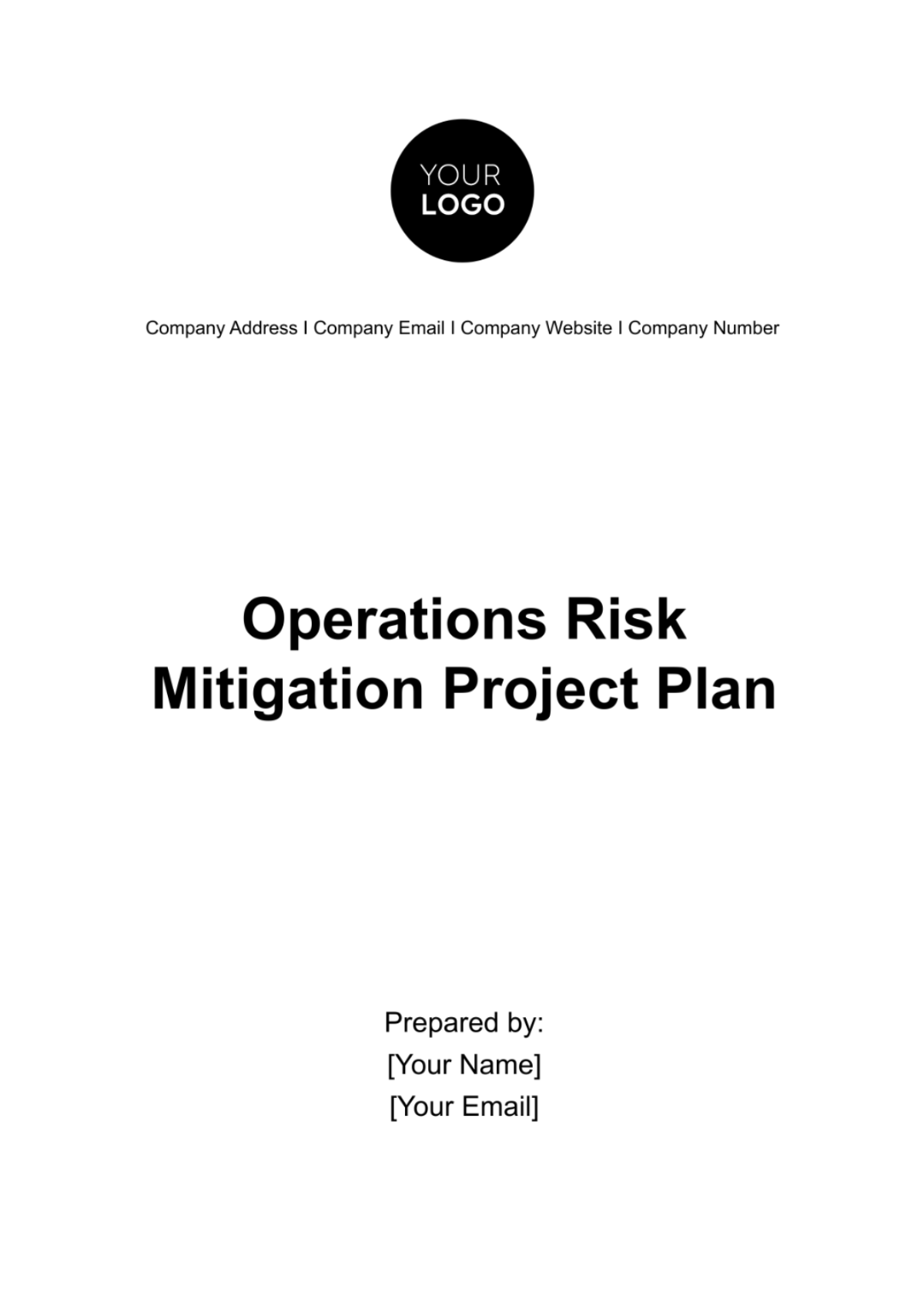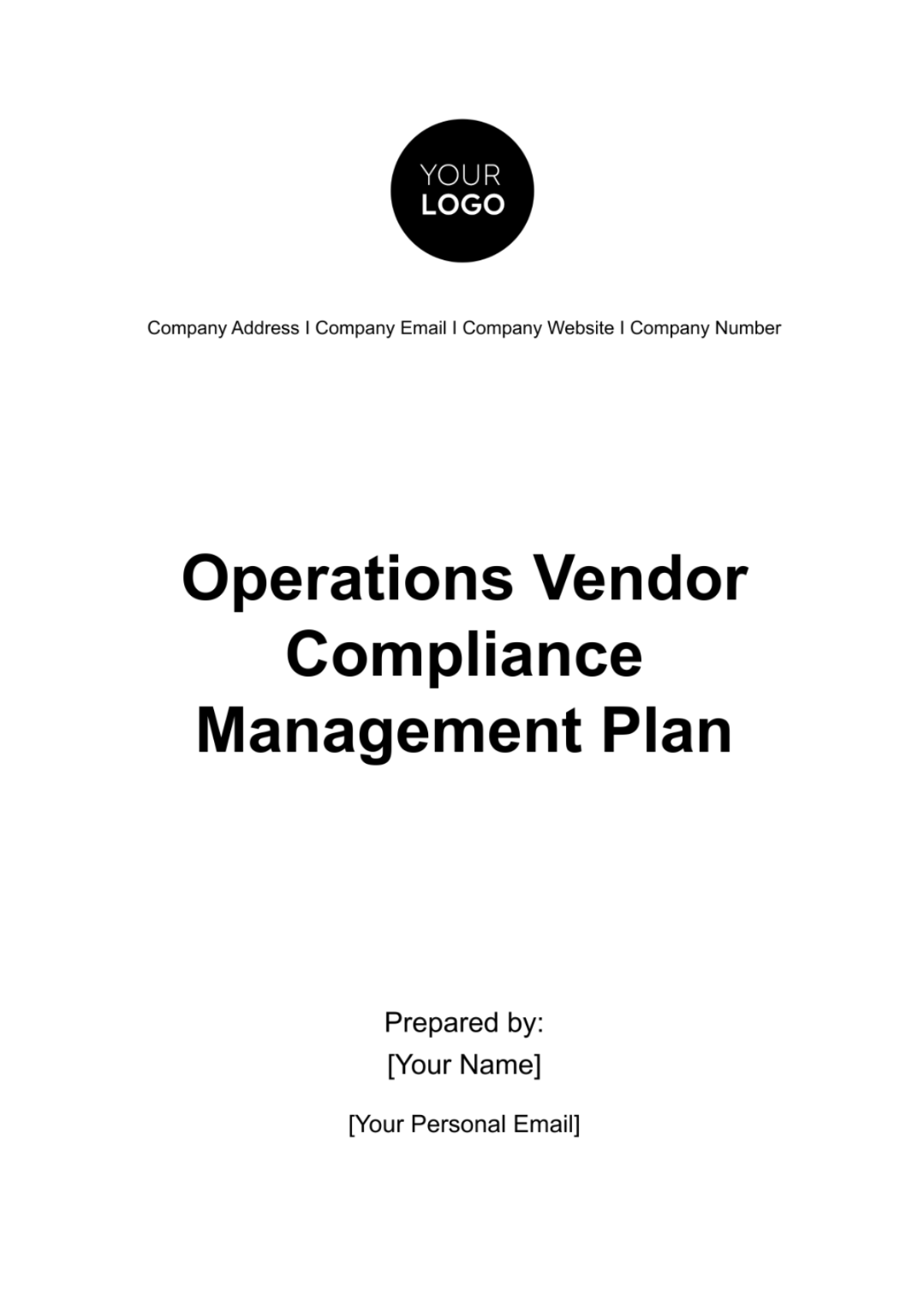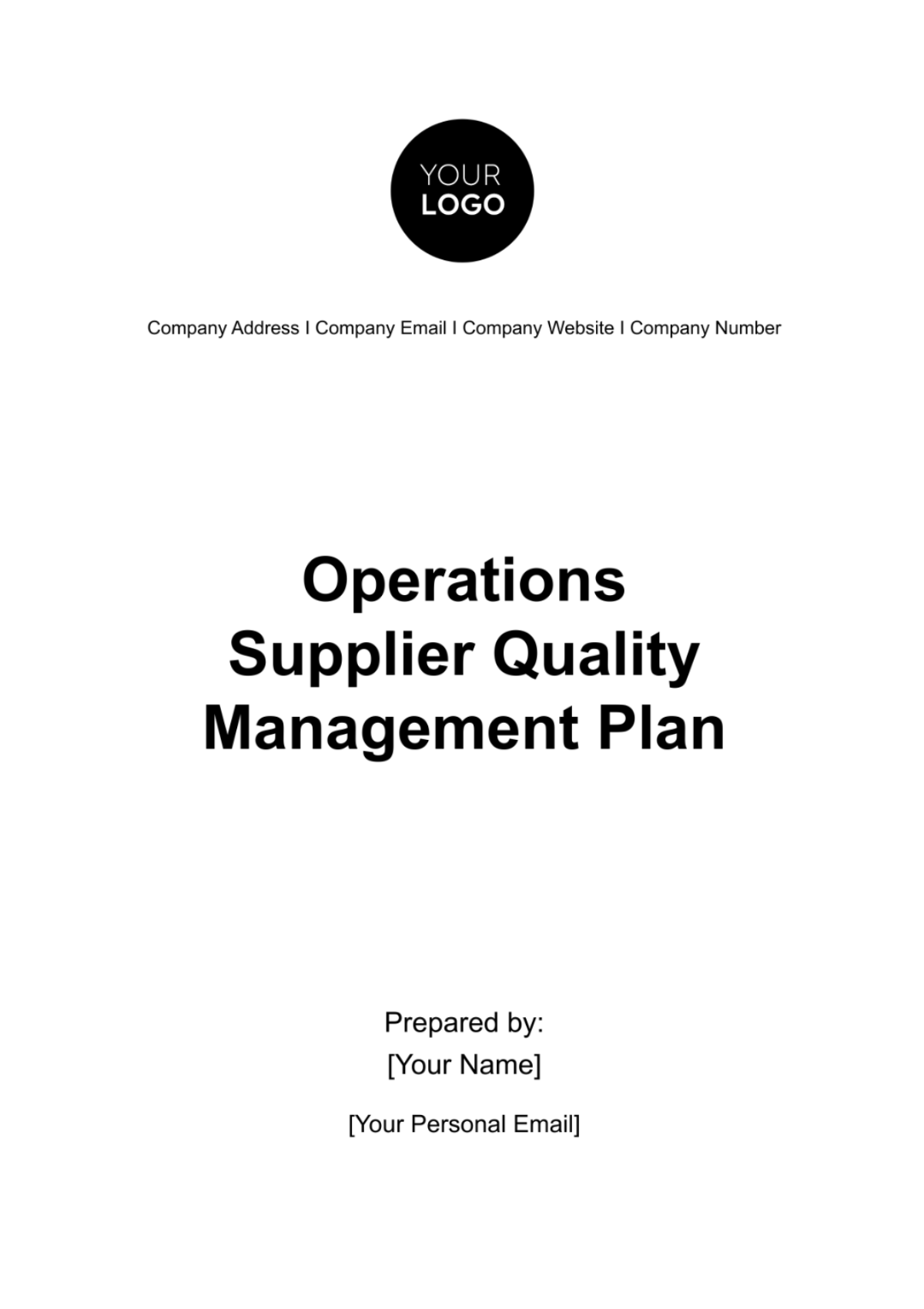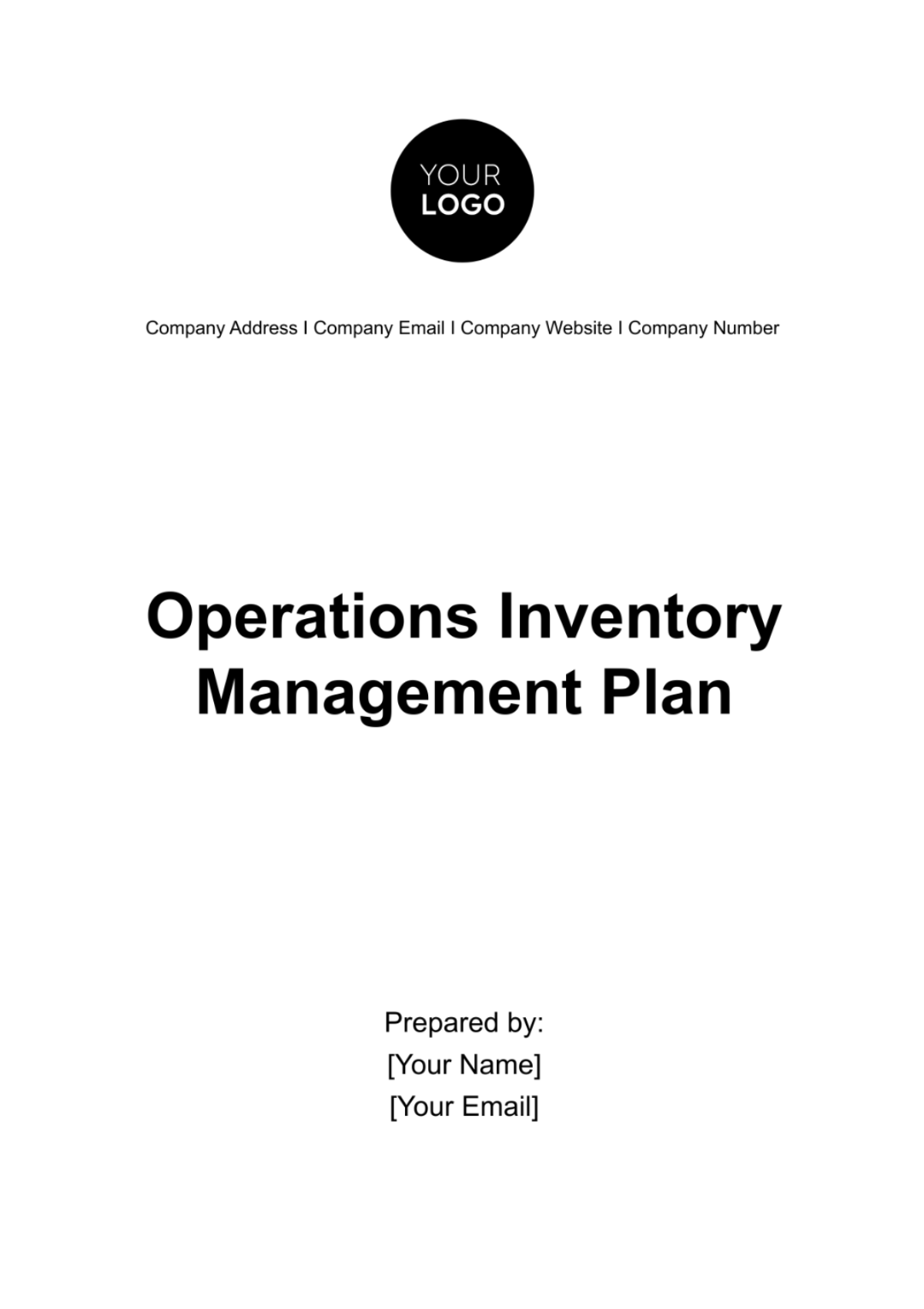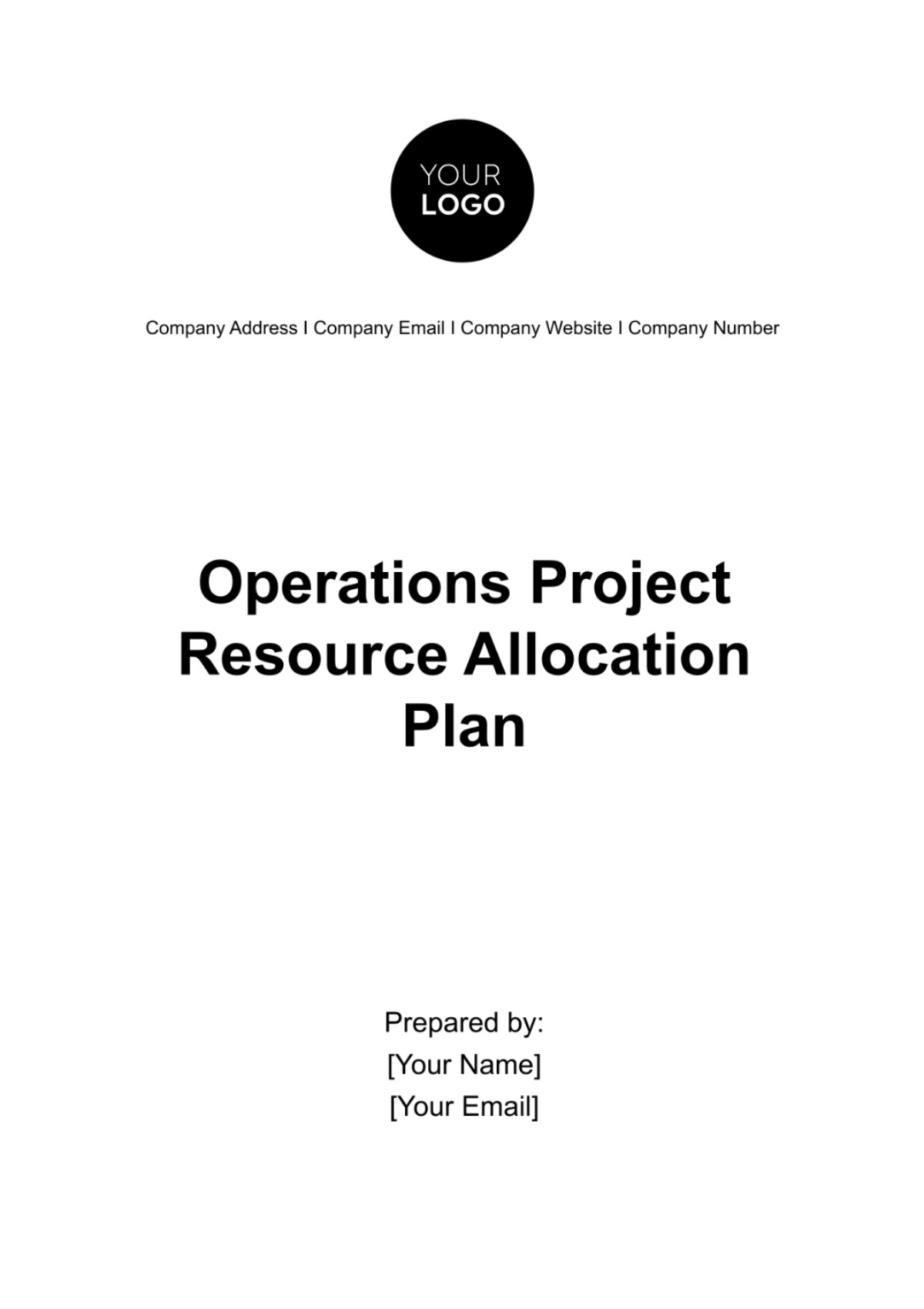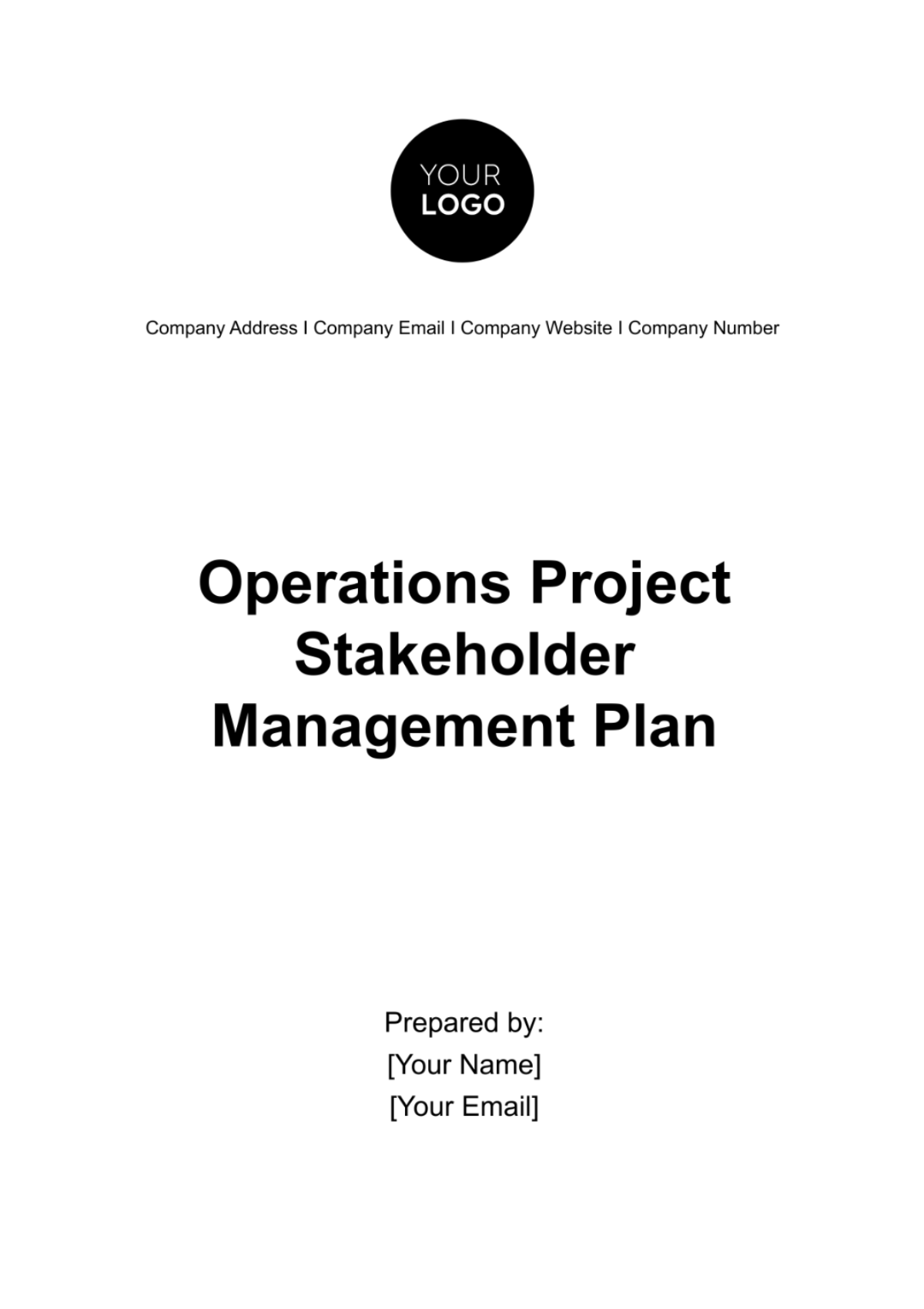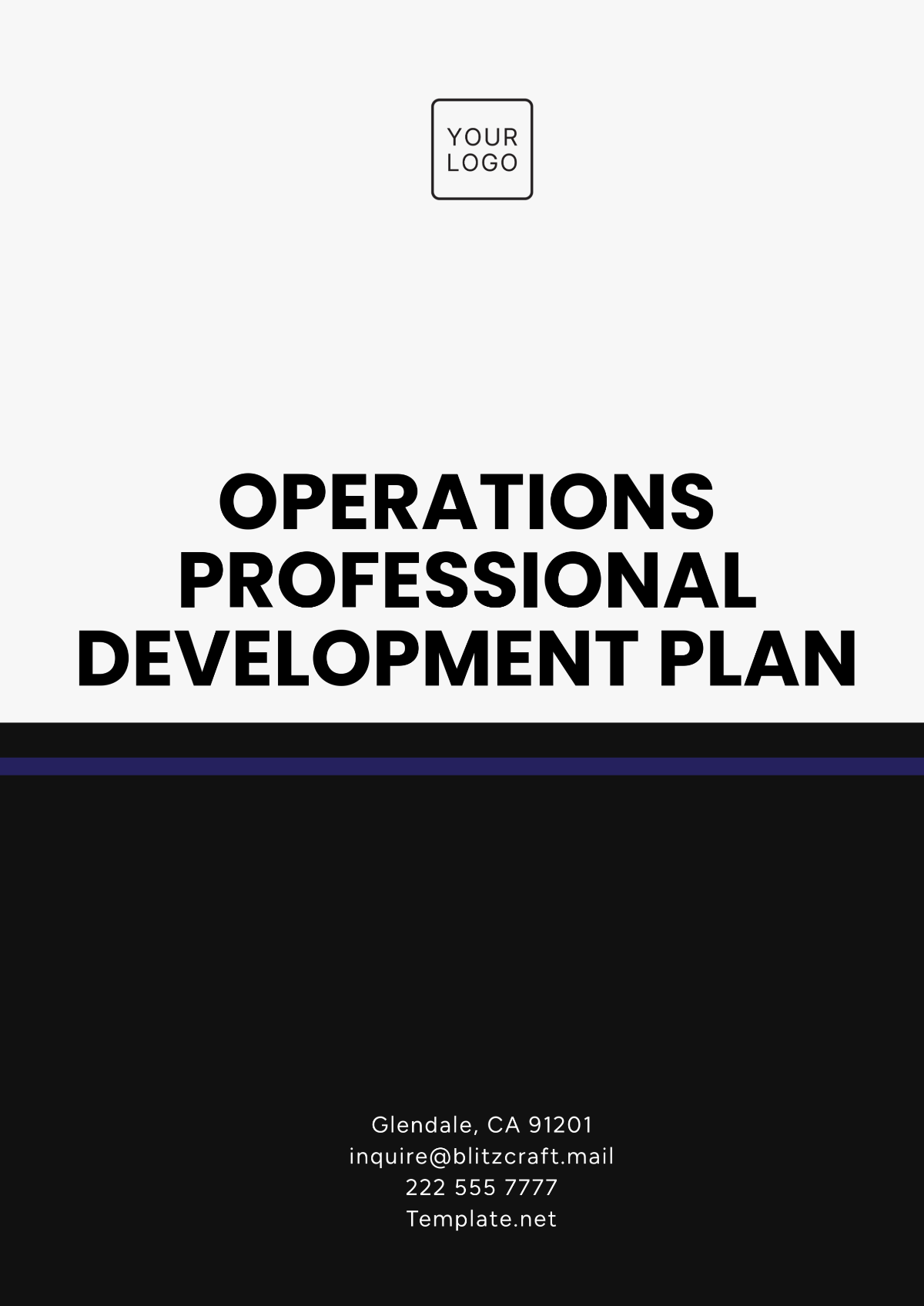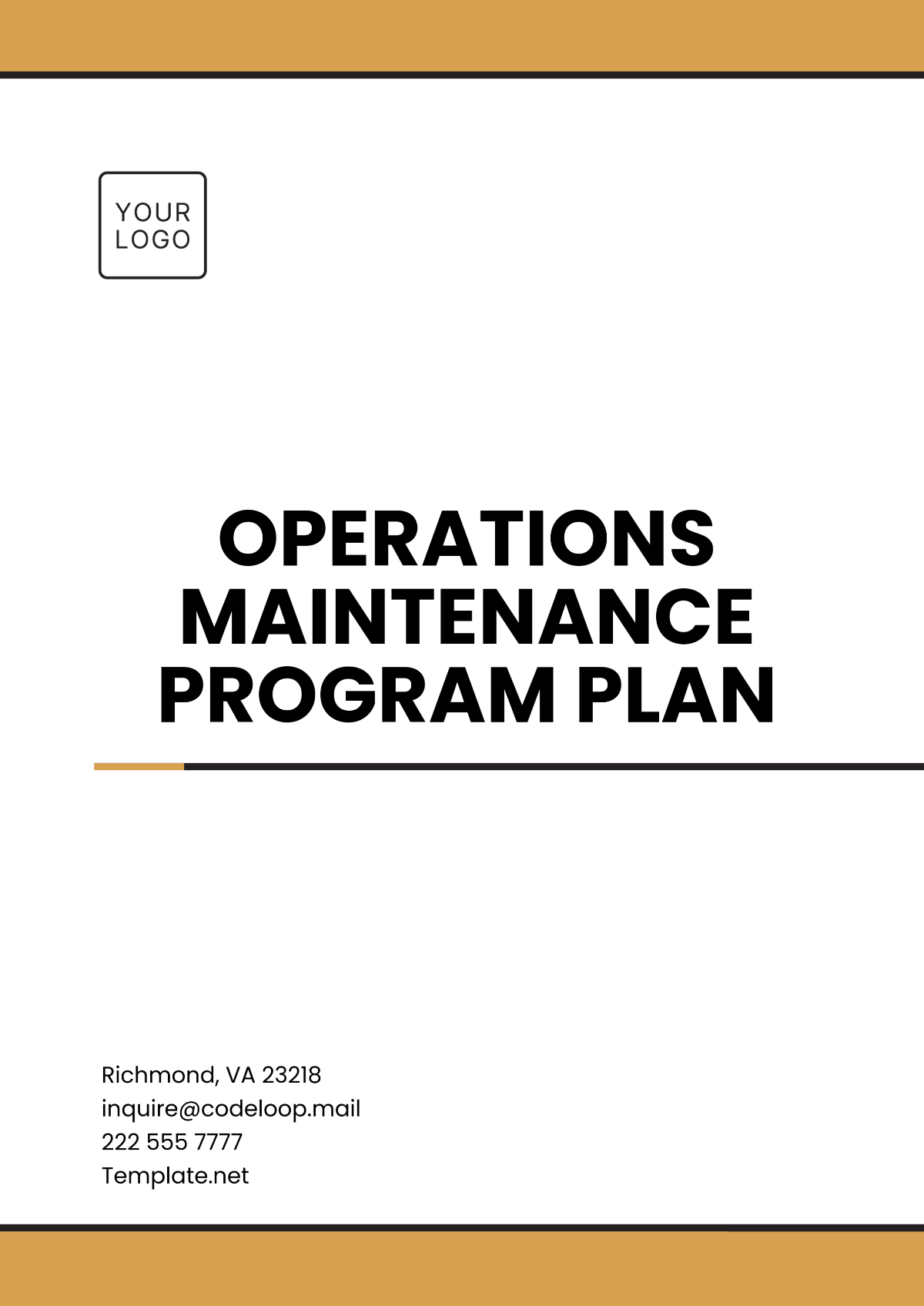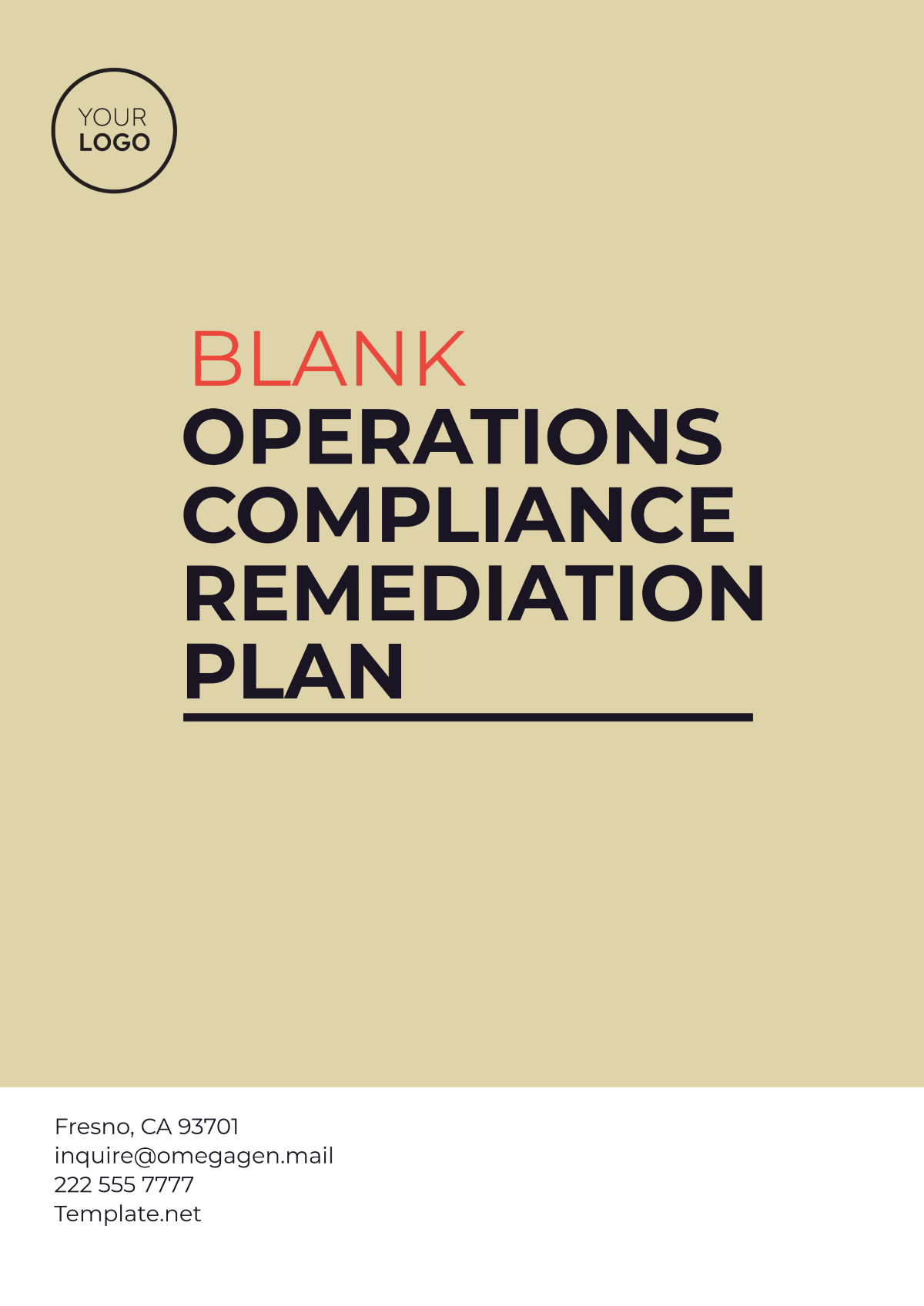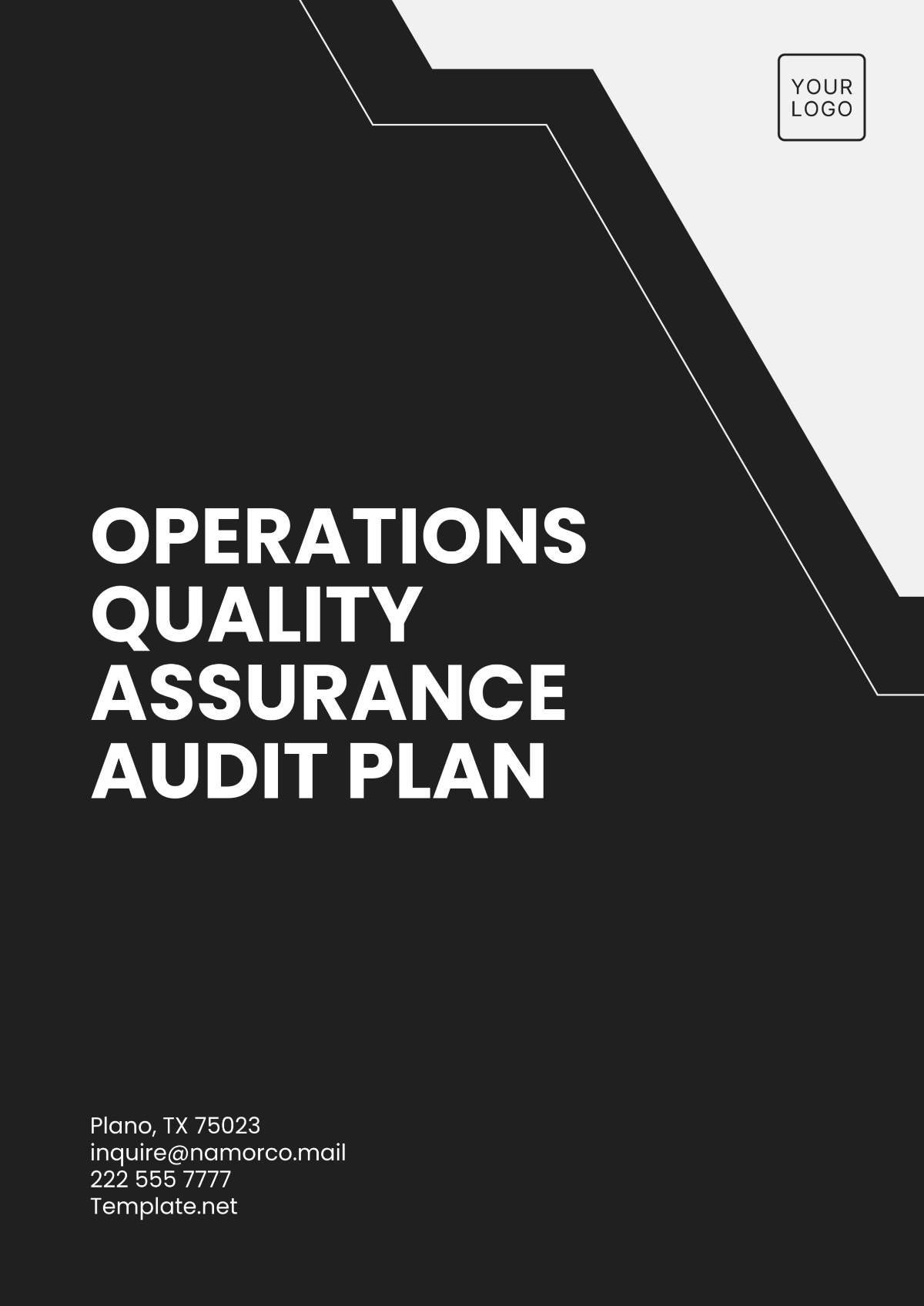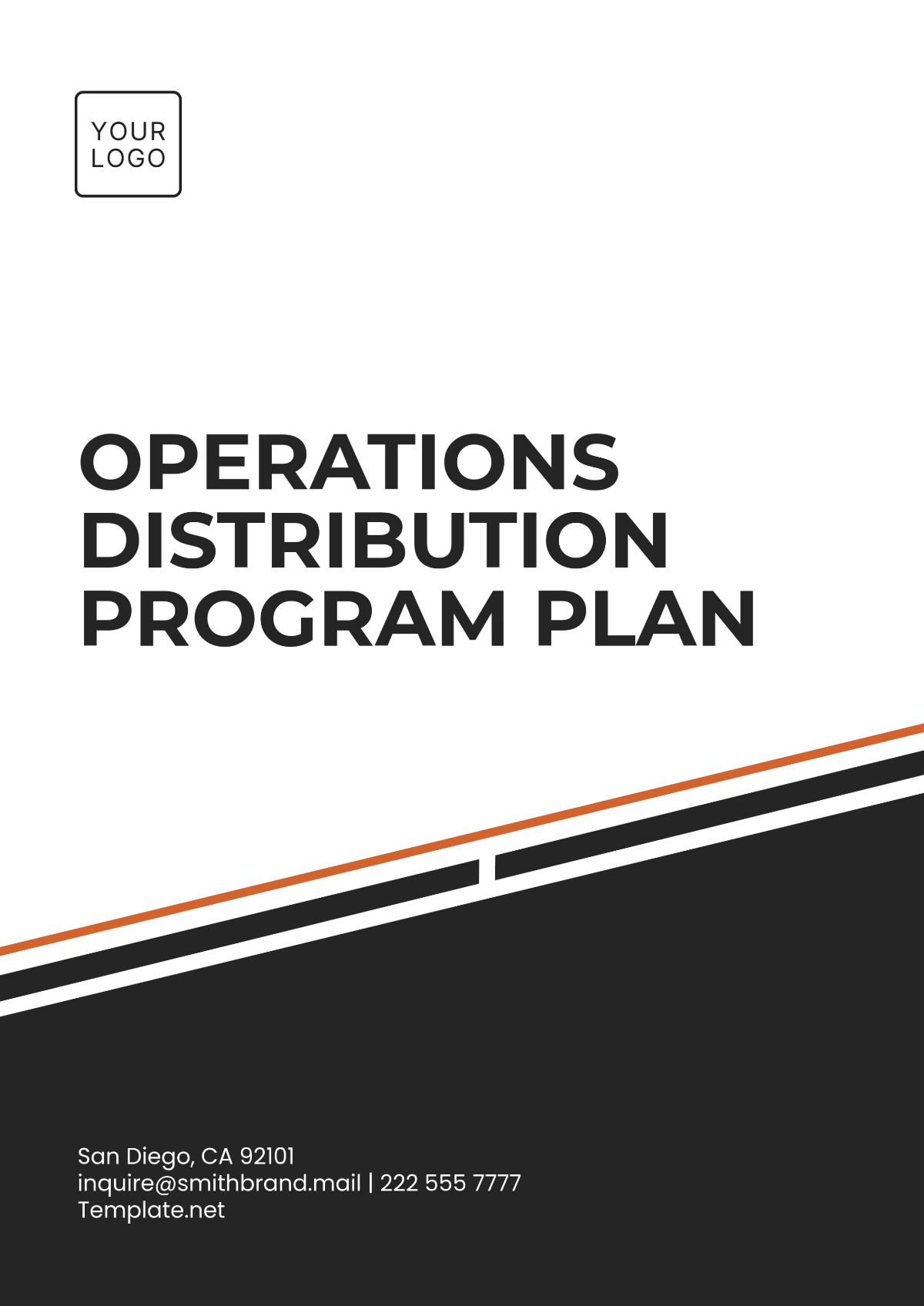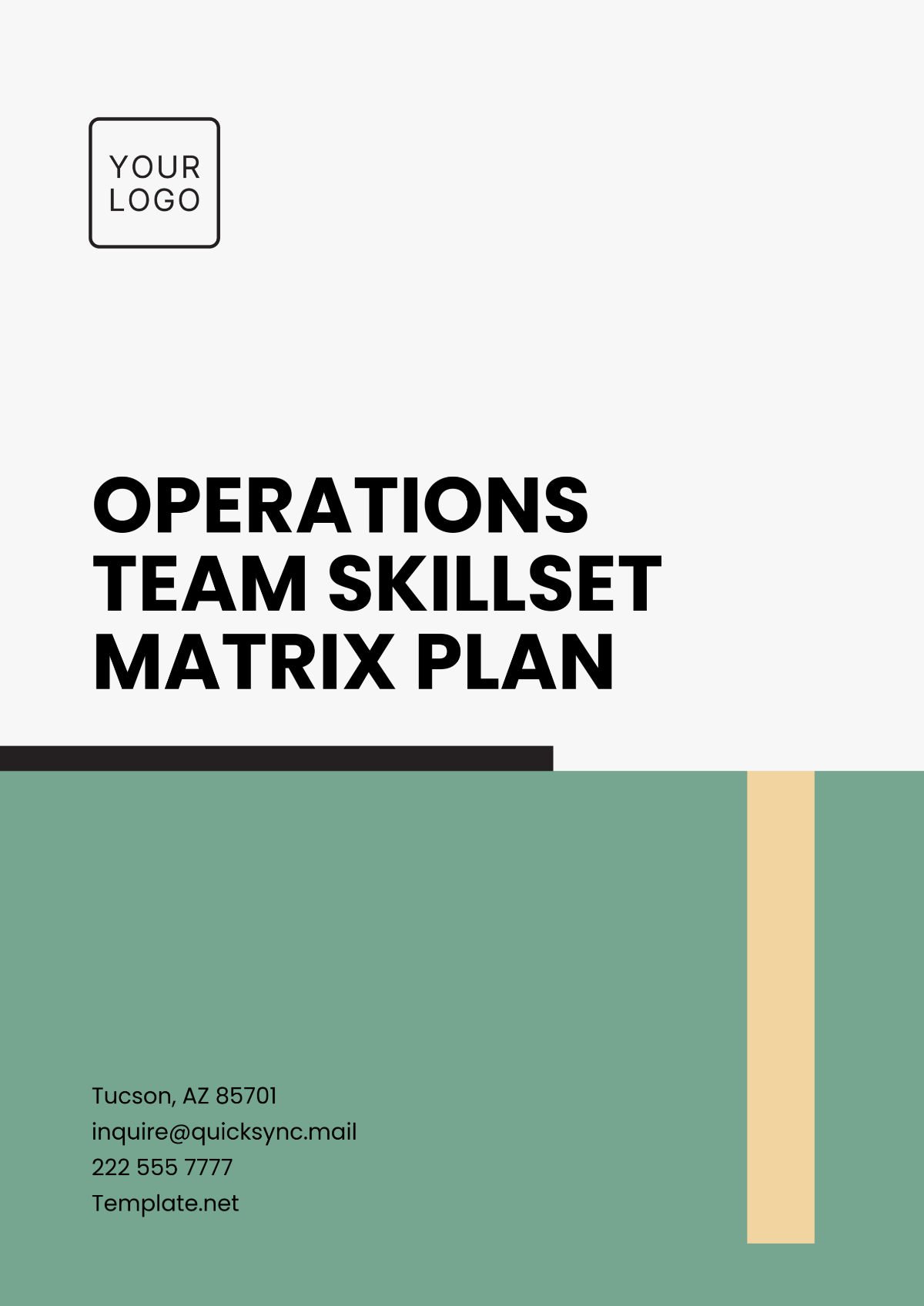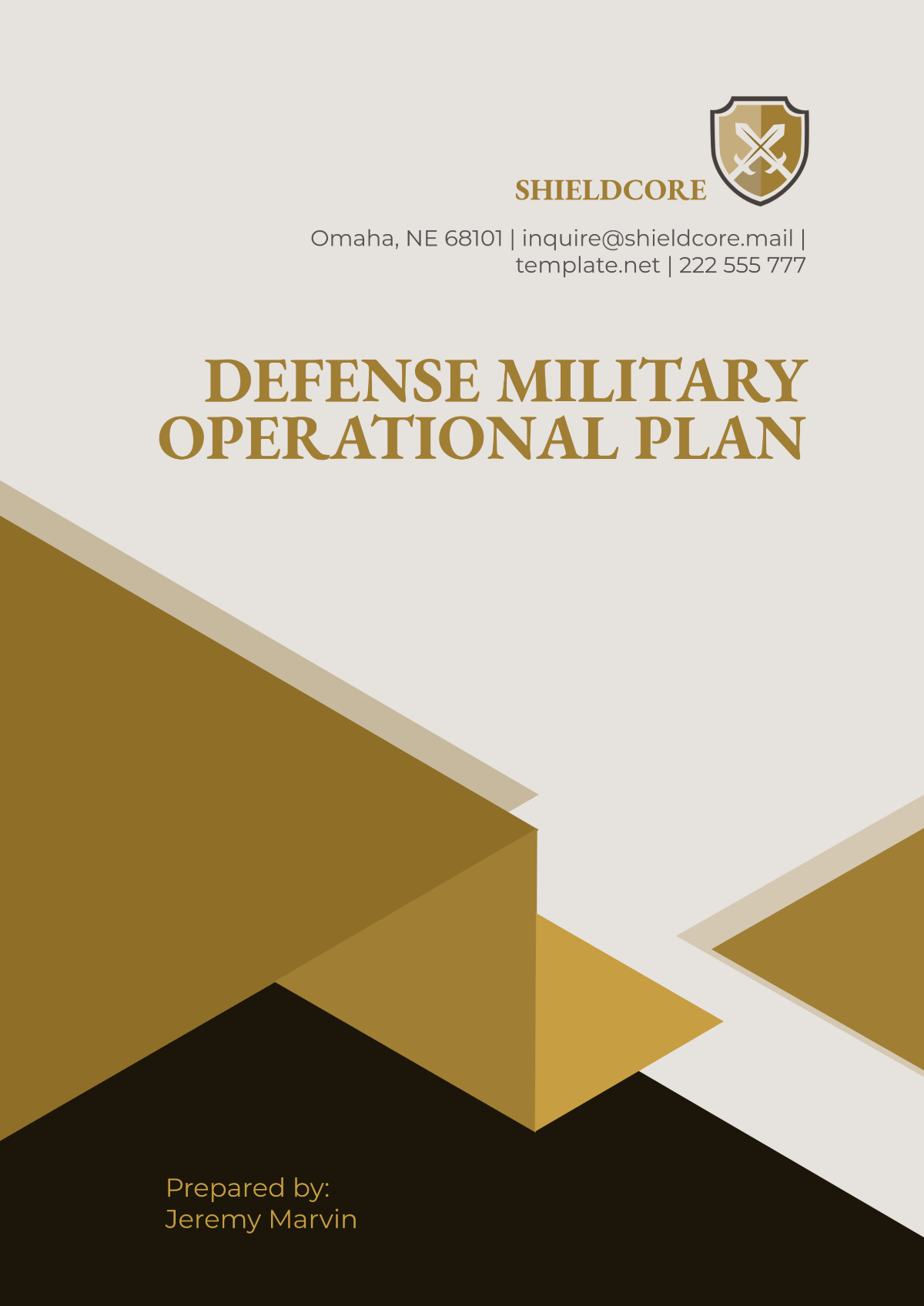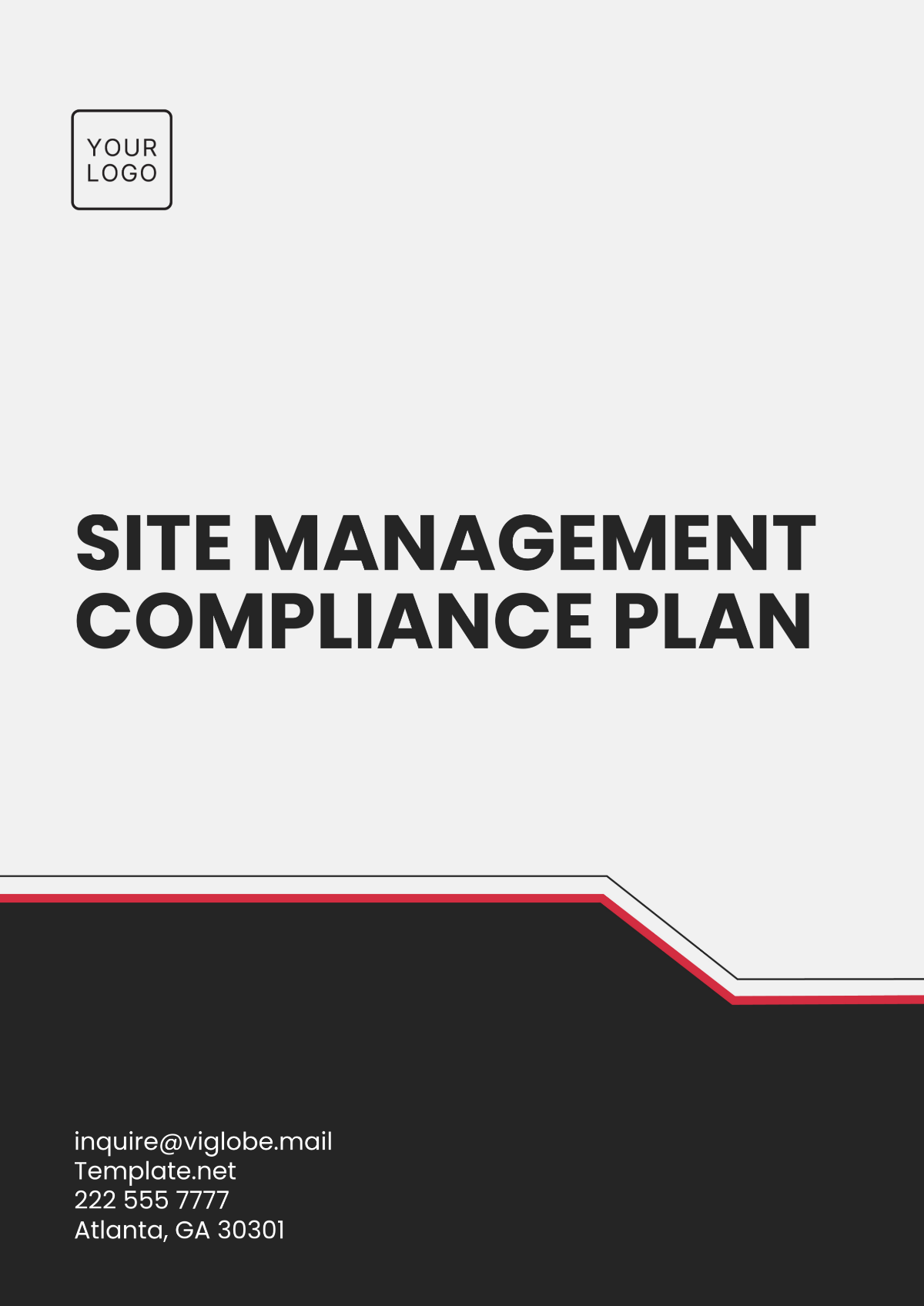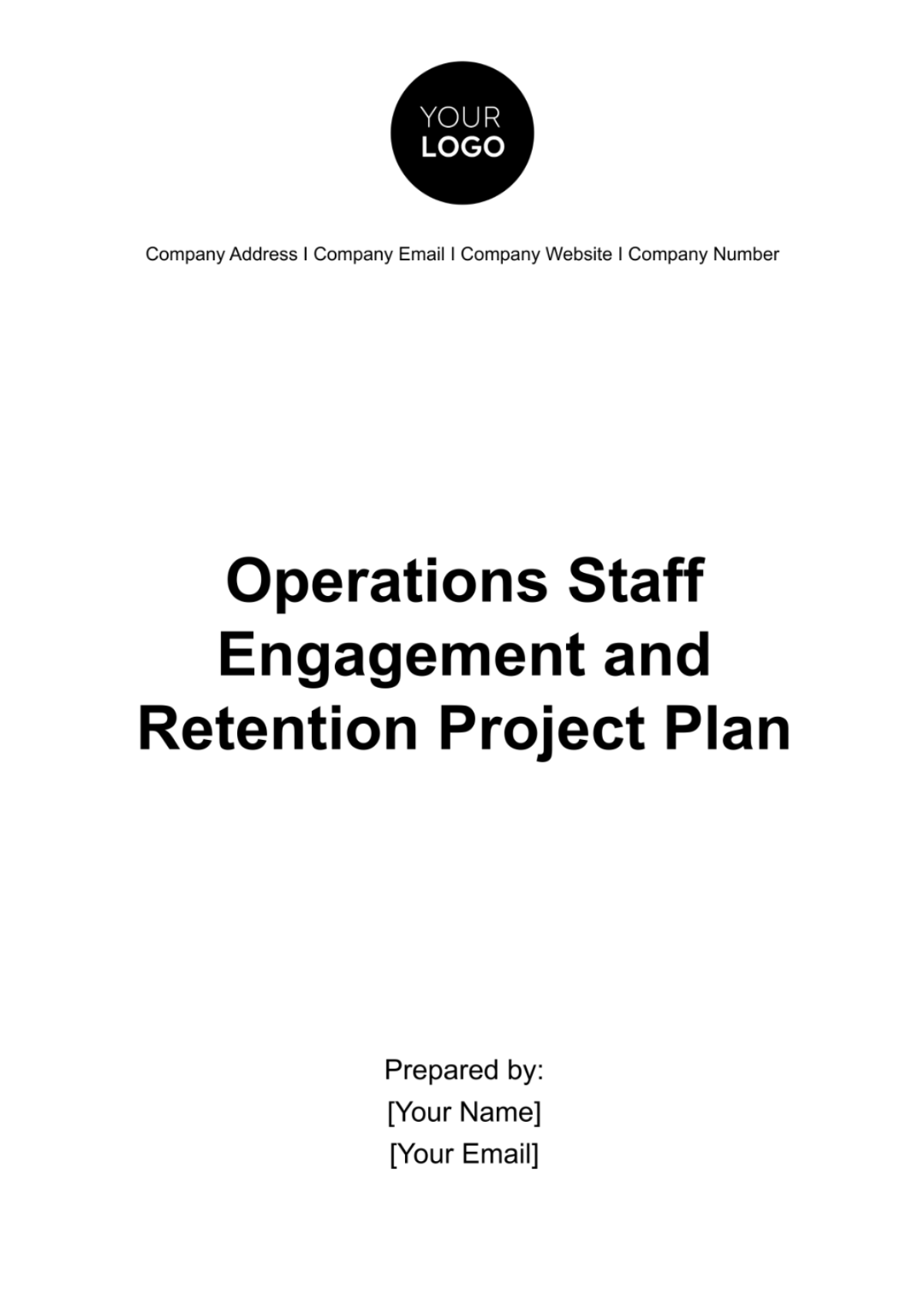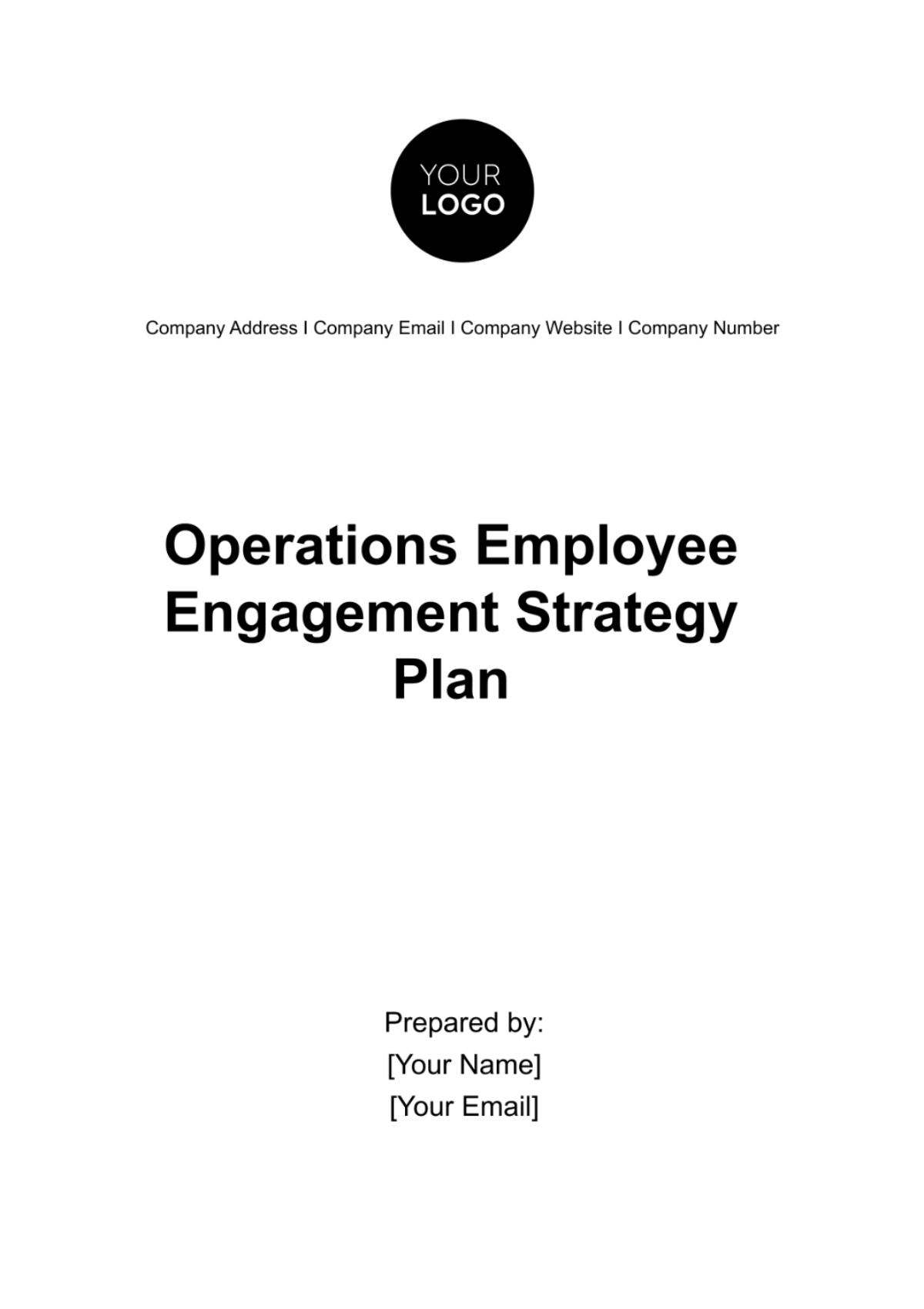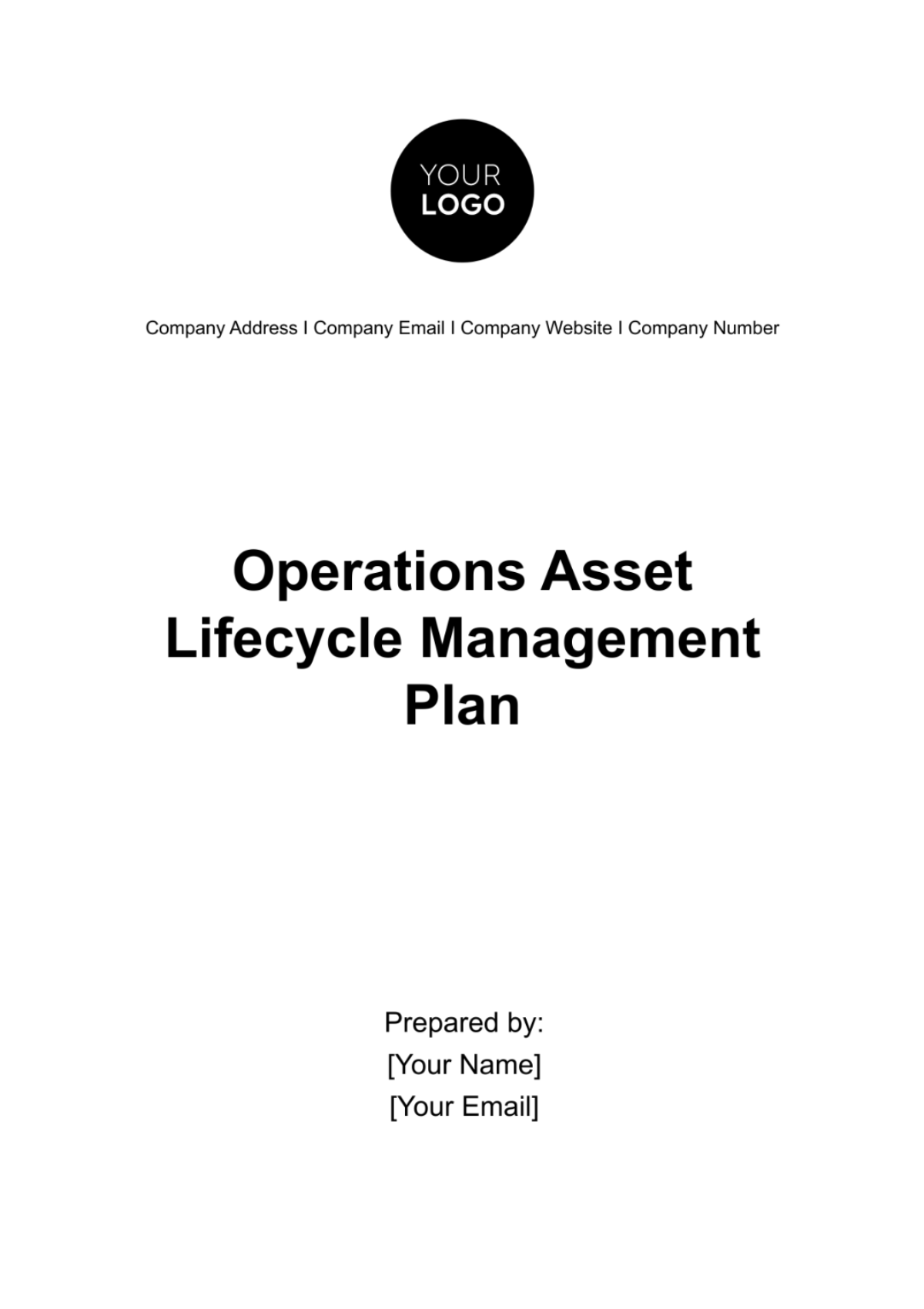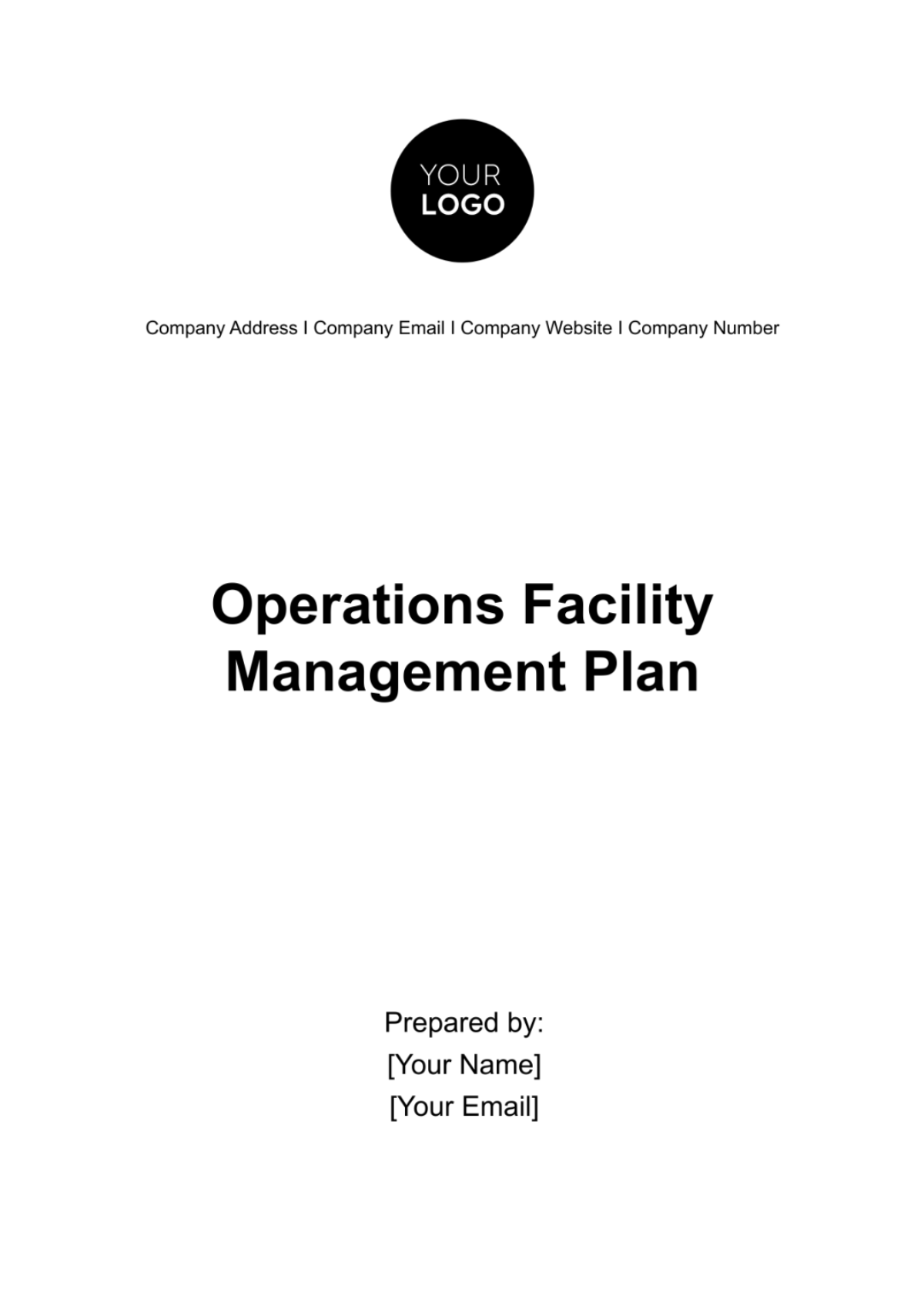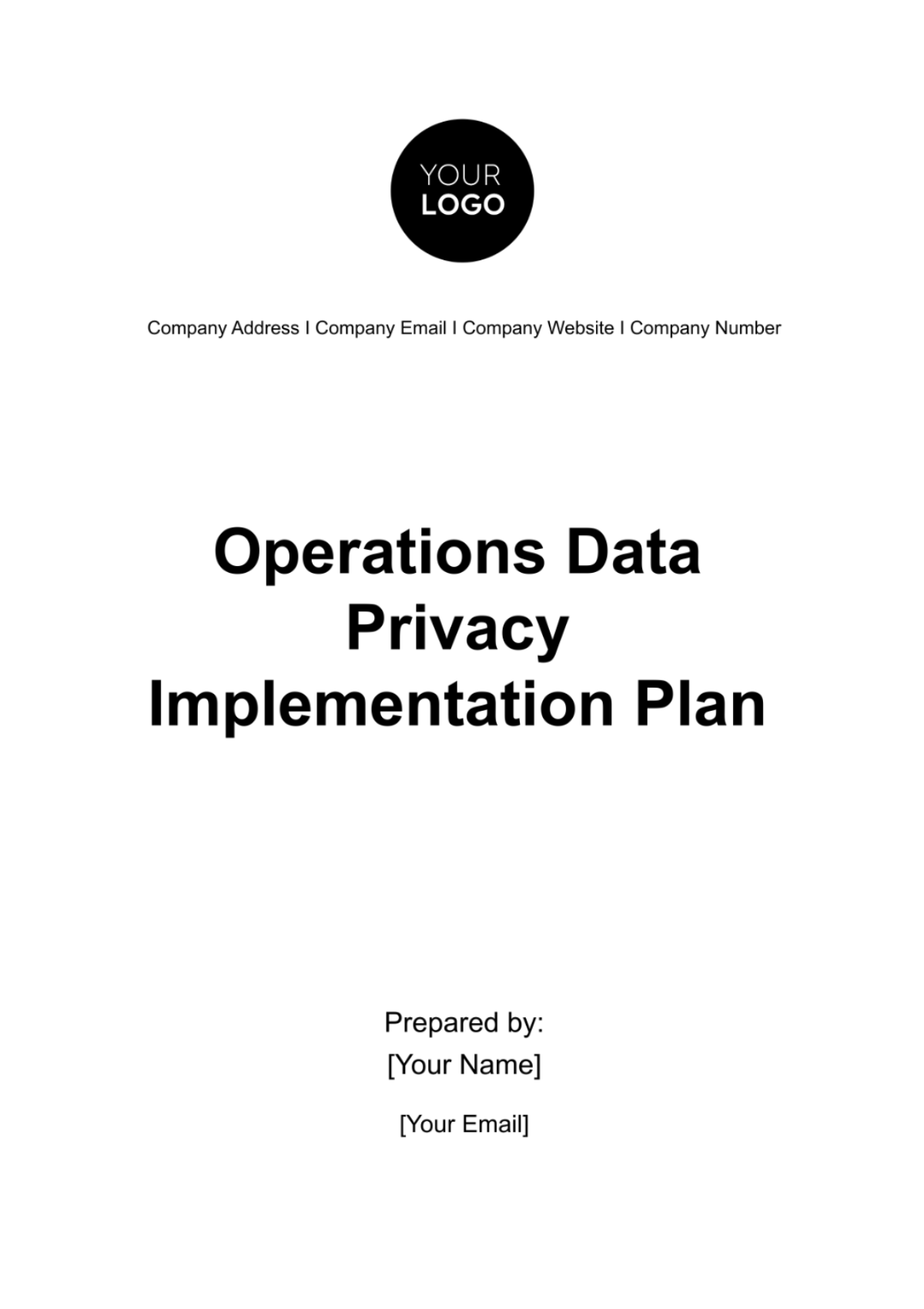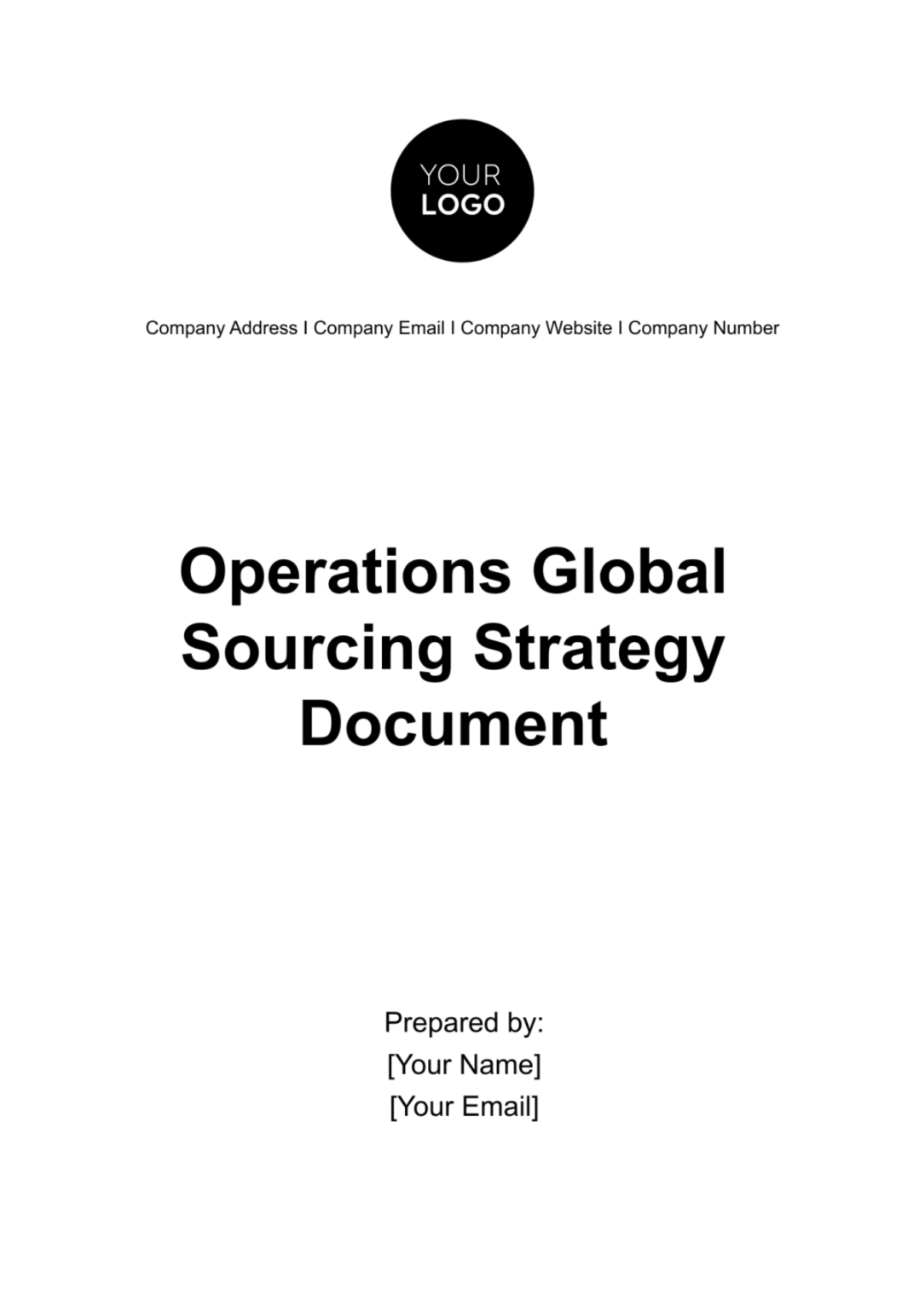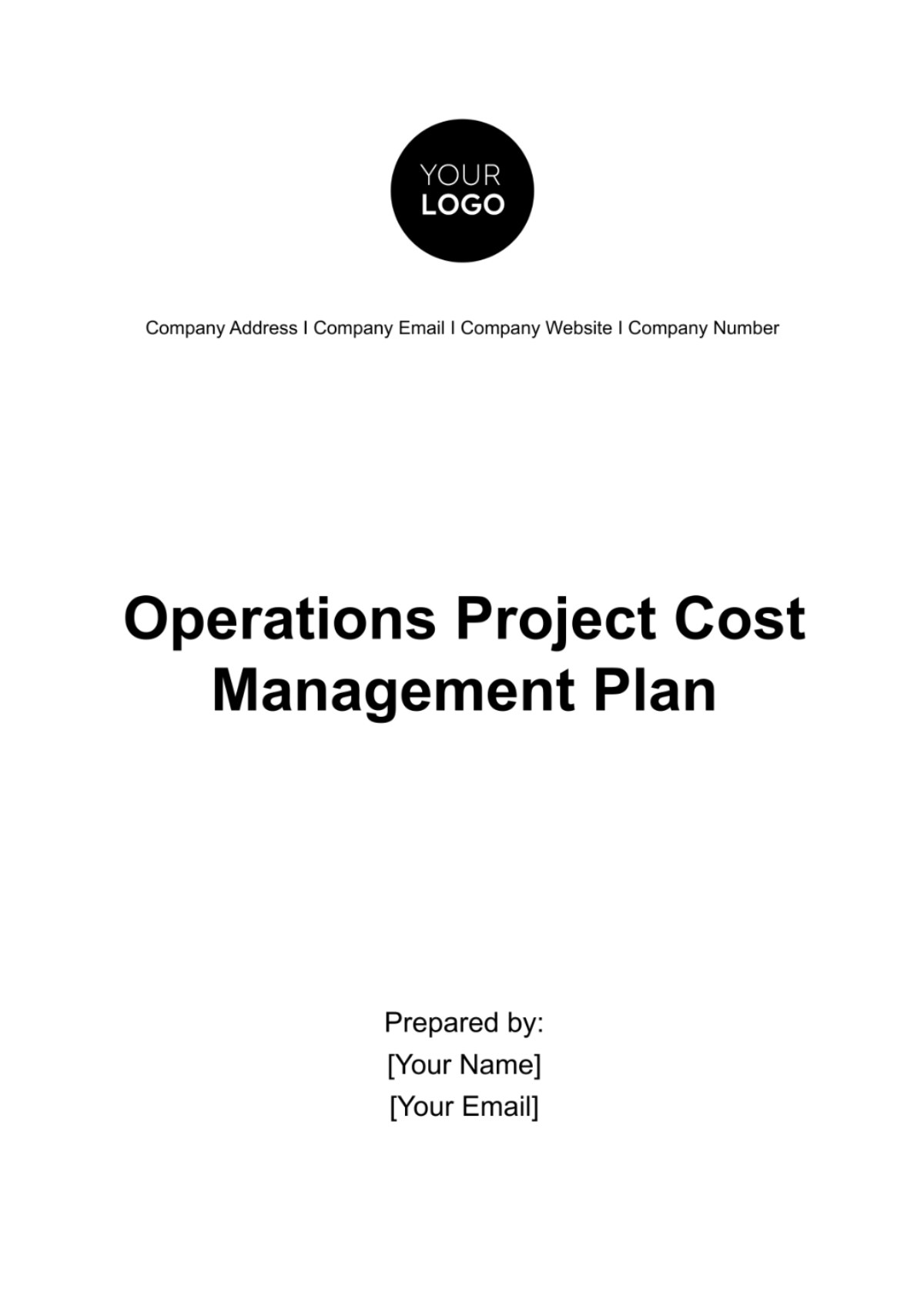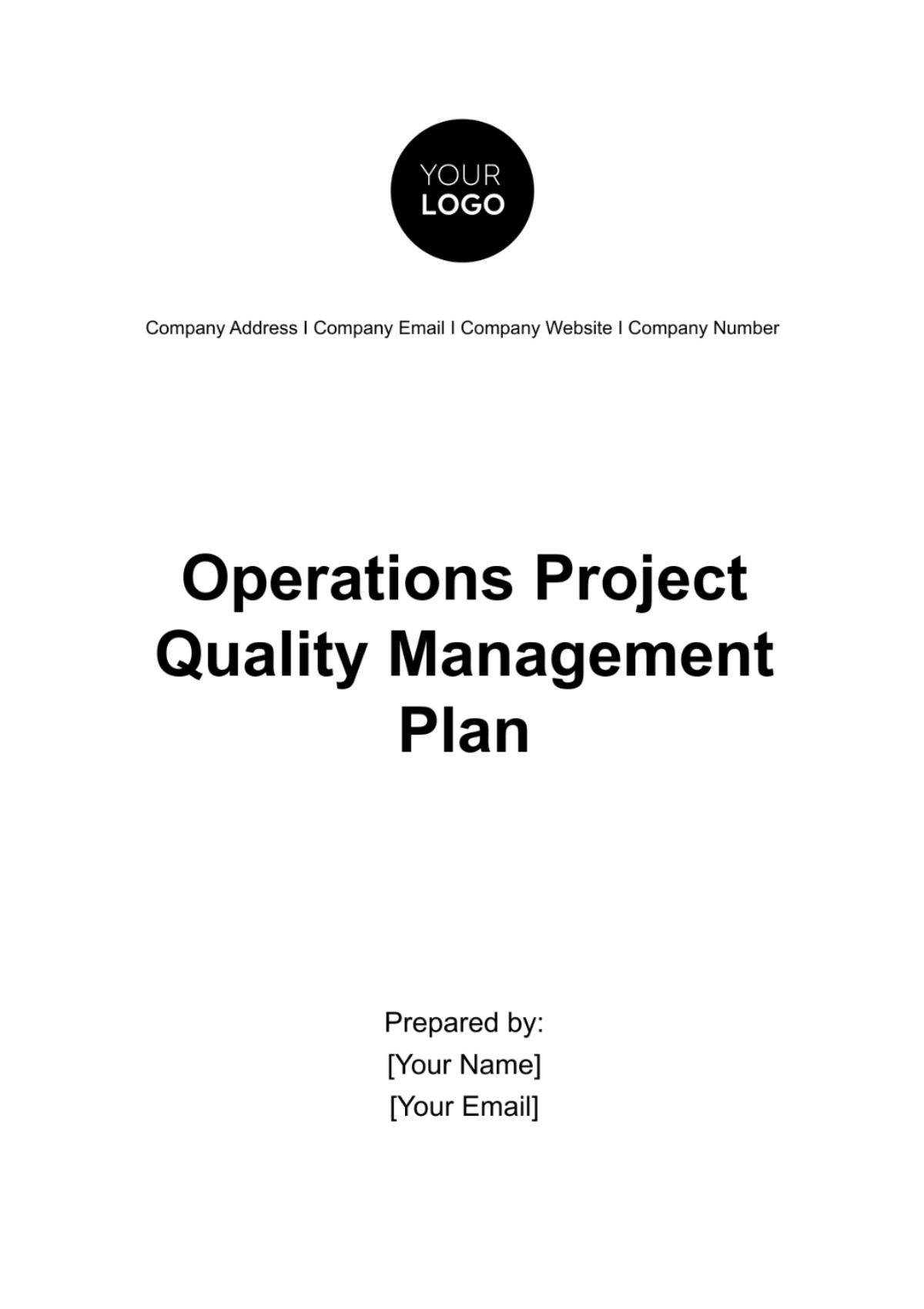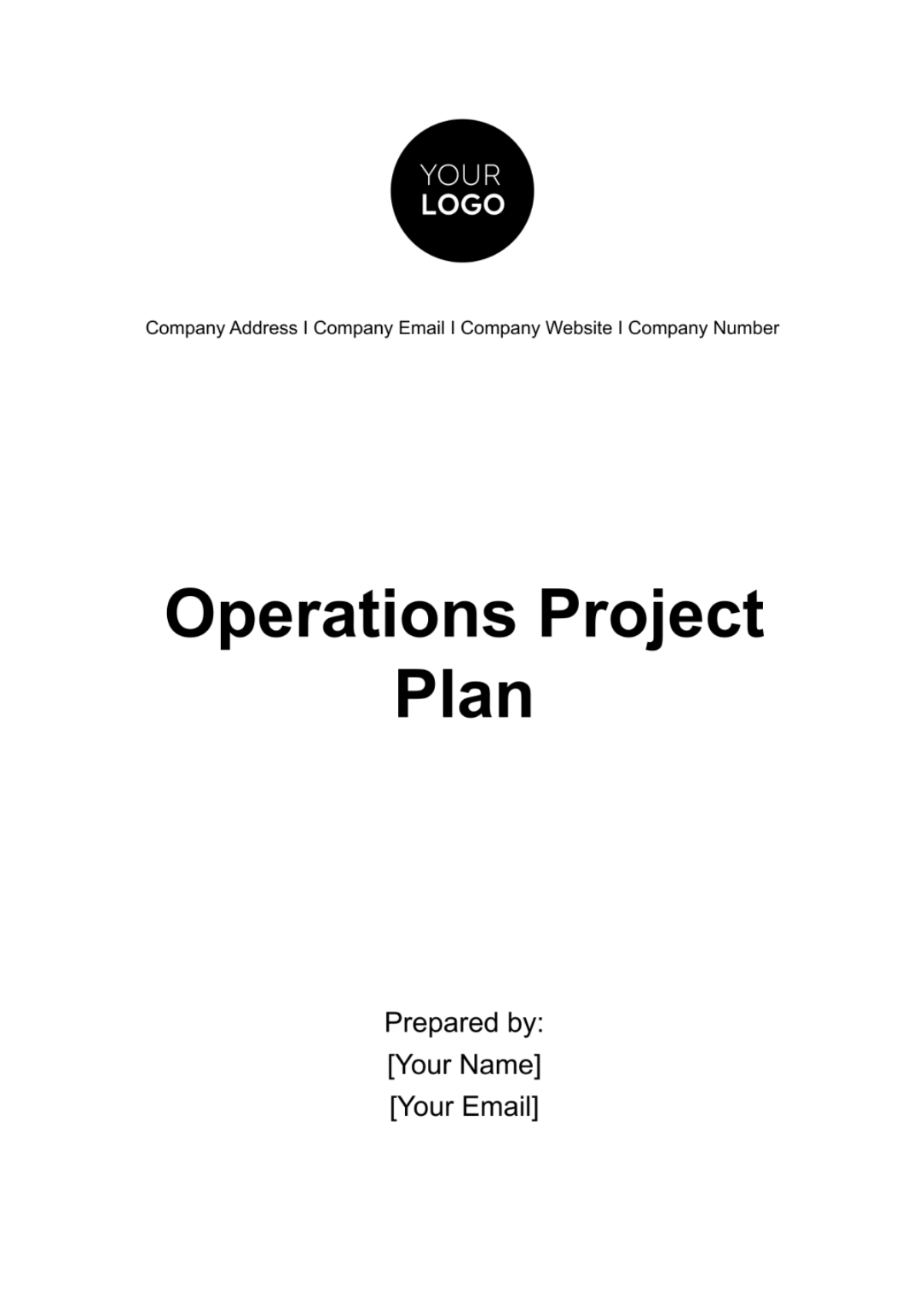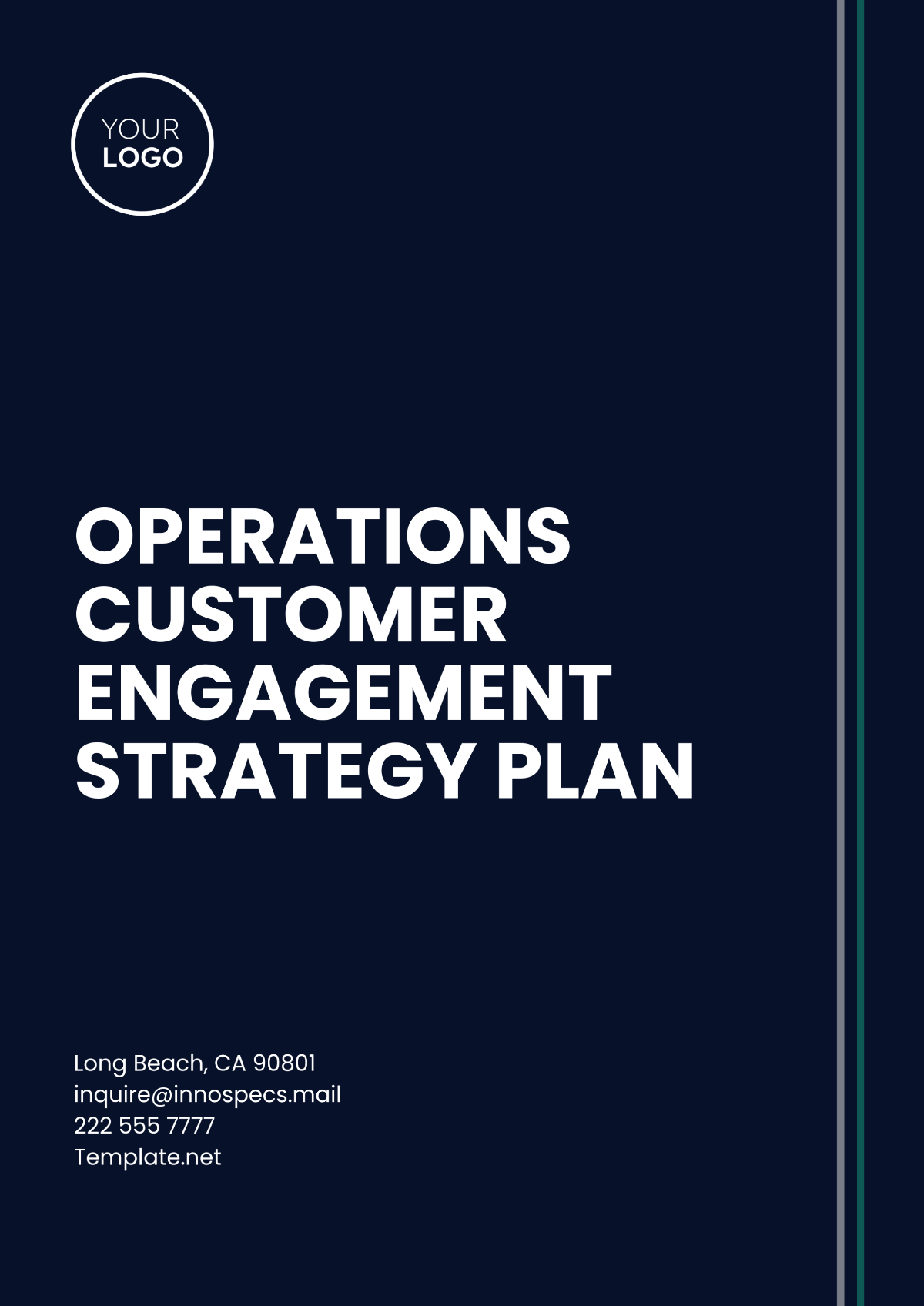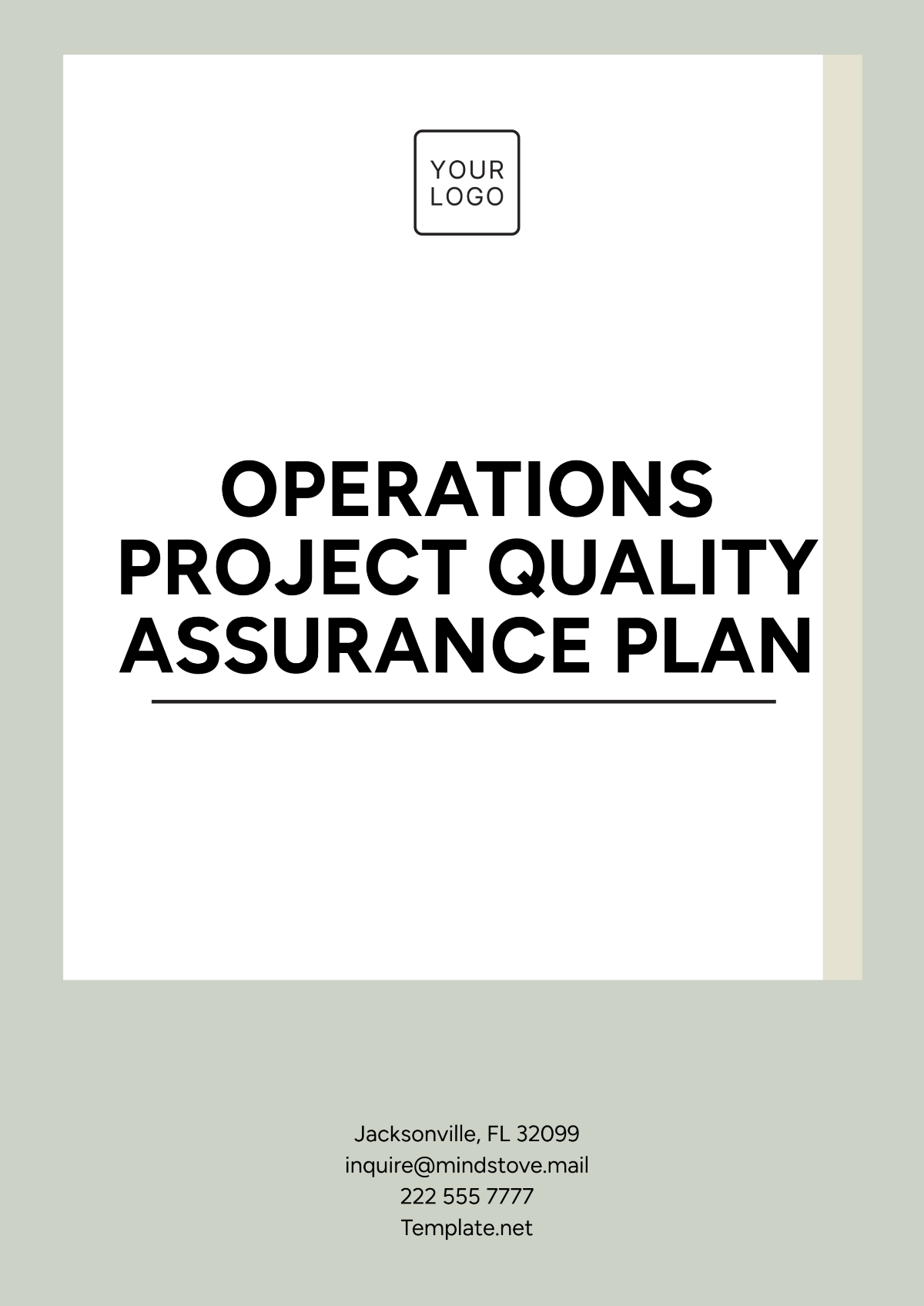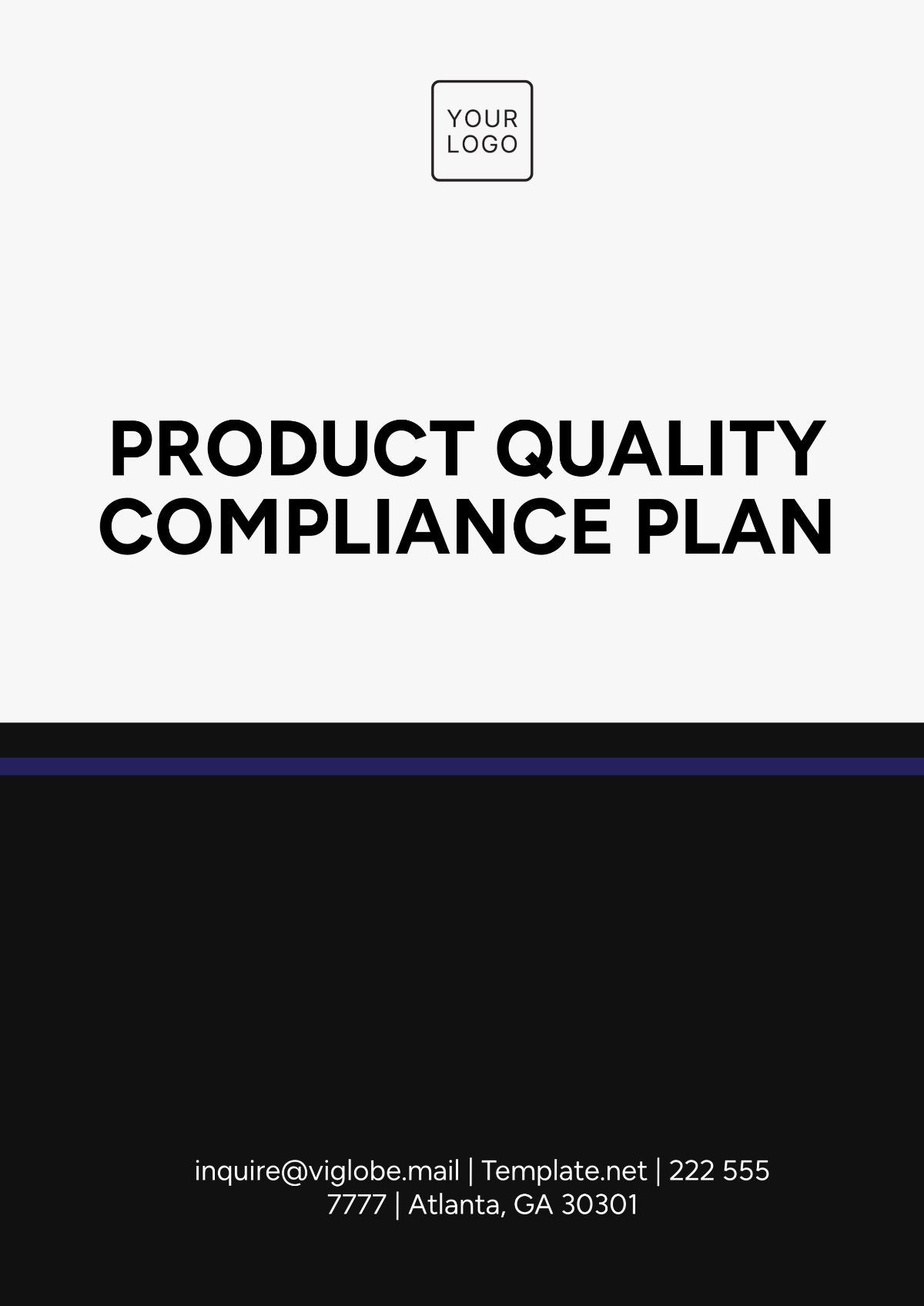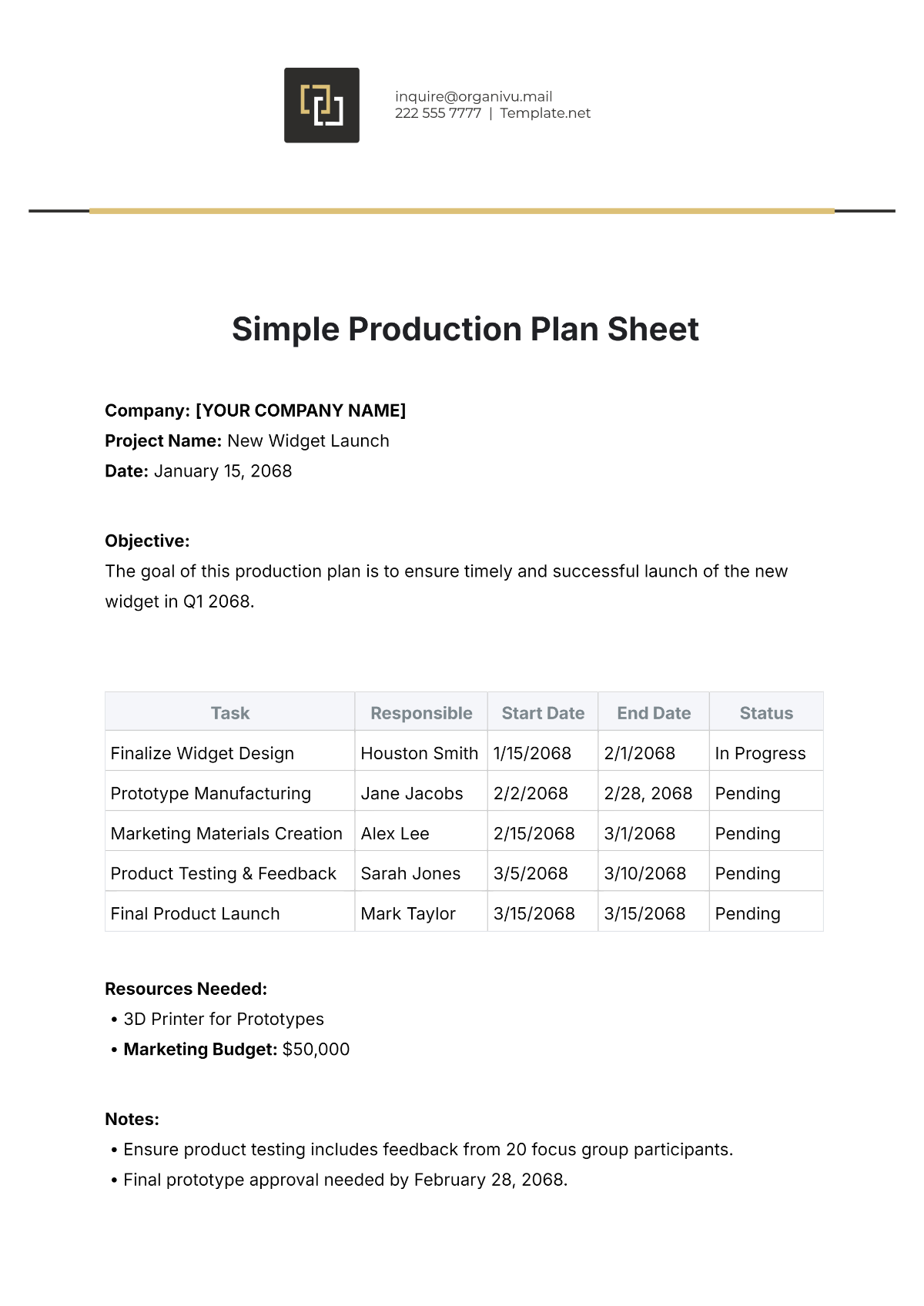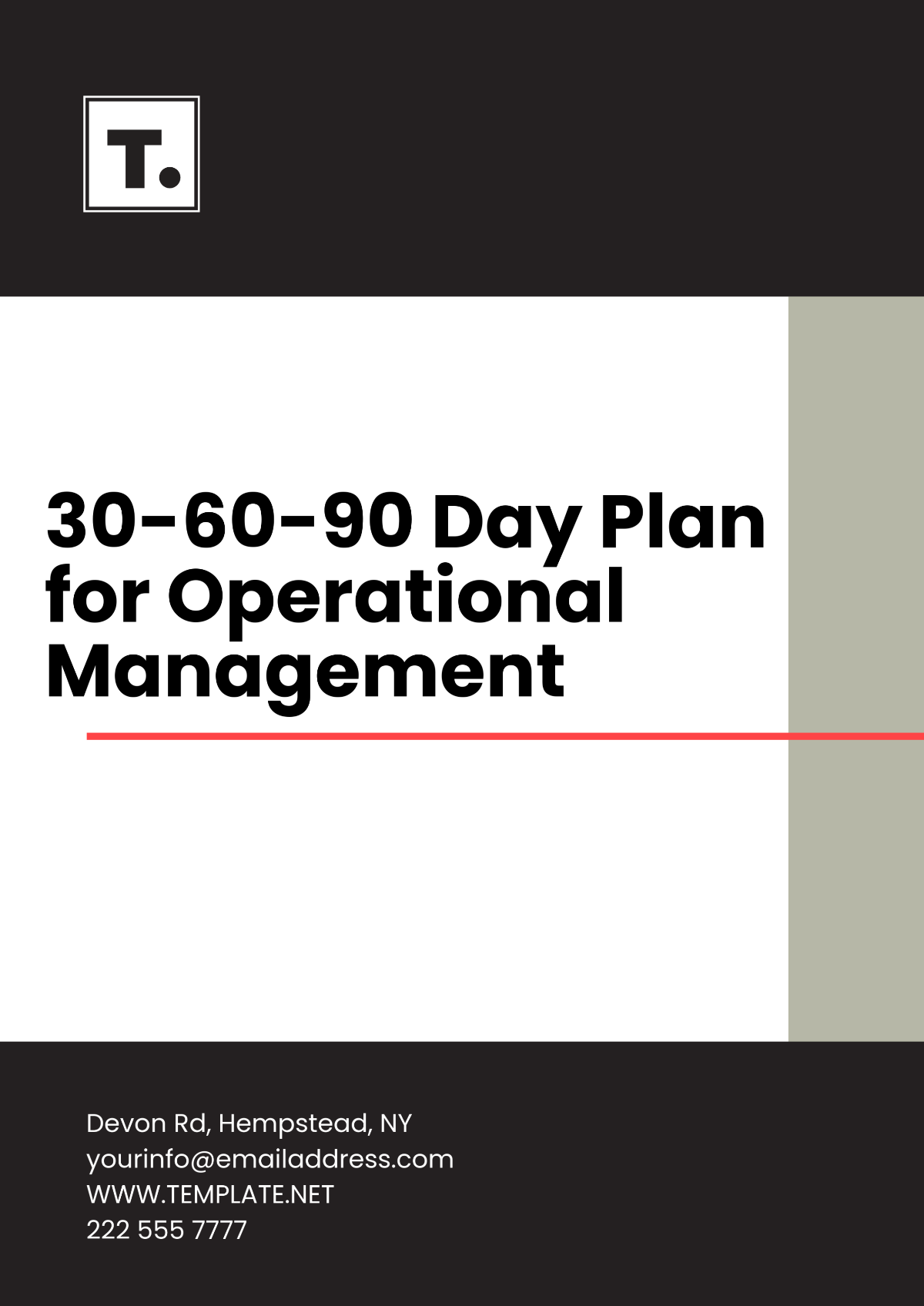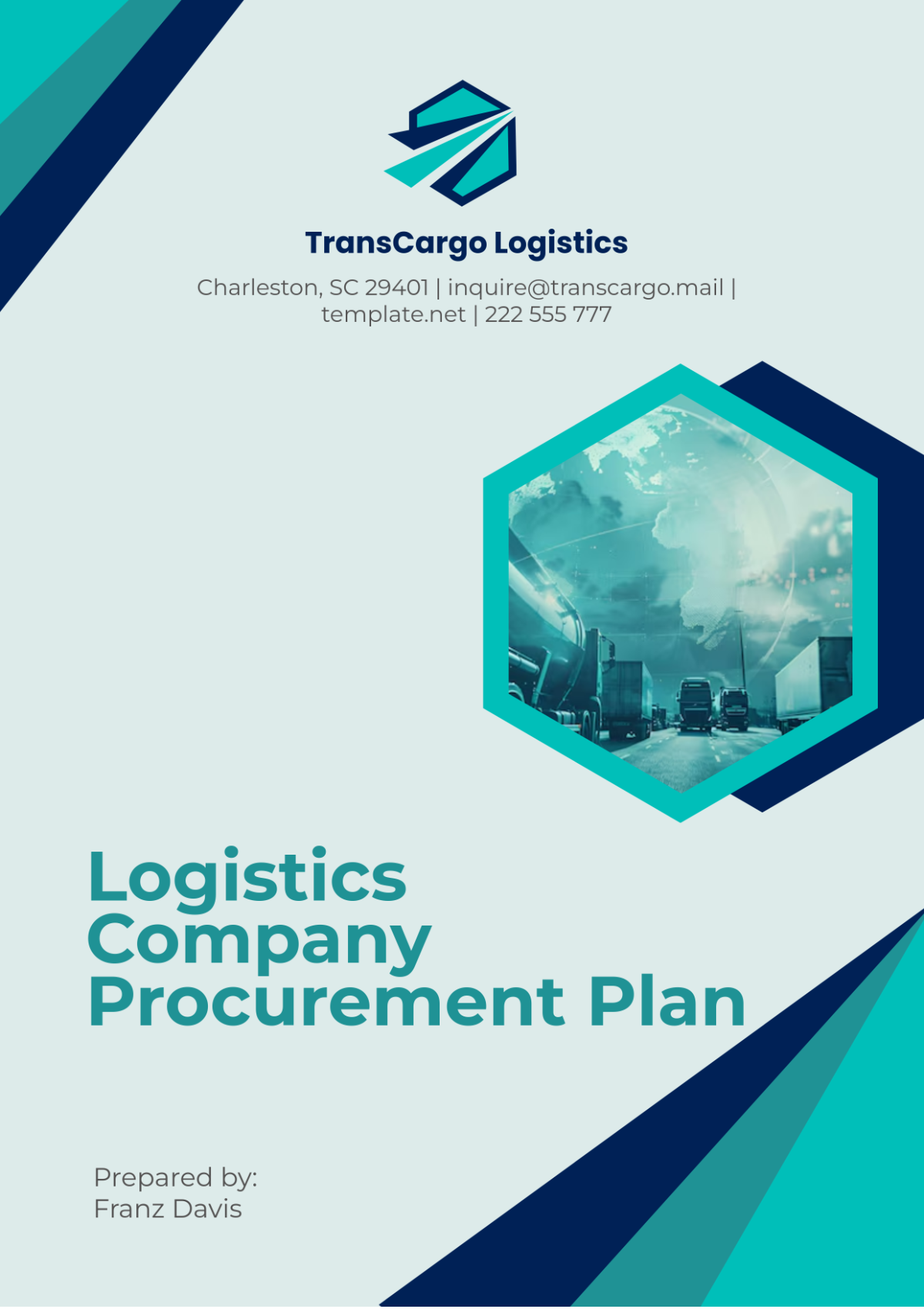Operations Asset Lifecycle Management Plan
Prepared By: | [Your Name] |
Company: | [Your Company Name] |
Date: | [Date] |
Introduction
The Operations Asset Lifecycle Management Plan is a comprehensive strategy designed to optimize the management, performance, and longevity of assets throughout their entire lifecycle within the organization. It ensures the right assets are in place to meet operational goals while minimizing costs, maximizing value, and adhering to relevant compliance standards. This plan outlines the key stages, responsibilities, and strategies involved in managing assets, from acquisition to disposal.
1. Asset Acquisition and Planning
1.1 Objective
To ensure that assets are acquired based on operational needs and financial capacity, with a focus on long-term value.
1.2 Key Actions
Needs Assessment: Identify operational requirements for new assets, considering the business objectives, productivity, and resource allocation.
Budgeting and Forecasting: Determine the financial resources required for asset acquisition, including procurement, installation, and training.
Vendor Selection: Engage with vendors, evaluate proposals, and select the most suitable options that meet both performance and cost criteria.
Acquisition Approval: Obtain necessary approvals from senior management and finance departments before finalizing purchases.
1.3 Key Performance Indicators (KPIs)
Return on Investment (ROI) for new assets.
Cost savings realized through strategic procurement.
Alignment of assets with operational requirements.
2. Asset Installation and Commissioning
2.1 Objective
Ensure assets are properly installed and integrated into operations, ready for optimal performance.
2.2 Key Actions
Installation Planning: Develop a clear plan for installation, including timelines, resources, and personnel requirements.
Training: Provide necessary training to operators and maintenance staff on asset handling, operational procedures, and safety protocols.
Testing and Calibration: Conduct thorough testing to ensure assets are functioning according to specifications and are ready for full-scale operation.
Commissioning: Formally commission the asset into active service with documented approval from responsible parties.
2.3 KPIs
Installation time against planned schedule.
Compliance with safety standards during commissioning.
Performance of assets within expected parameters during the initial use phase.
3. Operation and Performance Monitoring
3.1 Objective
To monitor asset performance continuously, ensuring efficient operation while minimizing downtime and maintenance costs.
3.2 Key Actions
Operational Monitoring: Use advanced monitoring tools and systems to track asset performance, efficiency, and health.
Routine Inspections: Schedule regular inspections and preventive maintenance activities to identify potential issues before they impact operations.
Performance Analysis: Analyze asset data (e.g., utilization, energy consumption) to identify opportunities for optimization.
Issue Reporting and Troubleshooting: Implement a system for reporting faults or performance degradation, with swift action taken to address issues.
3.3 KPIs
Asset uptime and availability.
Mean time between failures (MTBF).
Energy efficiency improvements.
Cost savings from predictive maintenance.
4. Maintenance and Upkeep
4.1 Objective
Ensure assets remain in good working condition throughout their operational life, minimizing downtime and repair costs.
4.2 Key Actions
Preventive Maintenance Program: Implement a schedule of regular maintenance tasks to prevent unplanned failures and extend asset life.
Corrective Maintenance: Address any issues that arise through repairs or part replacements as necessary.
Spare Parts Management: Maintain an inventory of critical spare parts to avoid delays in repairs.
Condition Monitoring: Employ condition-based monitoring to detect early signs of failure and trigger maintenance activities.
4.3 KPIs
Reduction in unplanned downtime.
Maintenance costs per asset.
Asset reliability and performance metrics.
Percentage of preventive maintenance completed on schedule.
5. Asset Performance Optimization
5.1 Objective
Maximize the performance and life of assets by continuously identifying areas for improvement and efficiency gains.
5.2 Key Actions
Continuous Improvement: Regularly review asset performance data and implement changes or upgrades to improve productivity or reduce costs.
Energy Efficiency Initiatives: Identify opportunities for reducing energy consumption and integrating sustainable practices into operations.
Technology Integration: Upgrade assets with newer technology to improve their functionality, reliability, and operational efficiency.
Asset Reallocation: Reassign underused or overused assets to maximize their utility.
5.3 KPIs
Improvement in asset performance metrics (e.g., output, efficiency).
Percentage reduction in energy usage per asset.
Cost-benefit analysis of technology upgrades.
6. Asset Disposal and Decommissioning
6.1 Objective
Ensure assets are properly decommissioned and disposed of in a responsible and compliant manner when they are no longer viable for operation.
6.2 Key Actions
Asset Evaluation: Periodically assess the performance and age of assets to determine their remaining useful life.
Disposal Planning: Develop a strategy for disposing of assets at the end of their lifecycle, including resale, recycling, or decommissioning.
Compliance: Ensure disposal processes meet environmental regulations and industry standards, including data wiping for IT assets.
Documentation: Maintain records of asset disposal and write-offs for auditing and compliance purposes.
6.3 KPIs
Disposal cost versus market value of assets.
Compliance with environmental and regulatory standards.
Disposal timeline adherence.
7. Roles and Responsibilities
7.1 Asset Manager
Oversee the entire lifecycle of assets.
Ensure that assets are managed efficiently, safely, and within budget.
Coordinate with various departments (operations, finance, and IT) to ensure asset lifecycle goals are met.
7.2 Operations Team
Handle the day-to-day use and maintenance of assets.
Report issues and ensure assets are properly utilized.
7.3 Maintenance Team
Perform routine inspections and maintenance tasks.
Address repairs and assist with the optimization process.
7.4 Finance Team
Support budgeting, forecasting, and cost management of asset acquisition, maintenance, and disposal.
Monitor asset depreciation and assist in capital planning.
7.5 Senior Management
Provide strategic oversight and decision-making based on asset performance and lifecycle data.
Ensure that asset management aligns with organizational goals.
8. Conclusion
The Operations Asset Lifecycle Management Plan is a vital tool in ensuring that assets are acquired, maintained, optimized, and retired in a manner that supports the operational objectives of the organization. By following this plan, businesses can enhance asset performance, minimize costs, and improve operational efficiency, while also ensuring regulatory compliance and sustainability.
9. Contact Information
For further updates and insights regarding the Operations Asset Lifecycle Management Plan, please contact:
Name: [YOUR NAME]
Email: [YOUR EMAIL]
